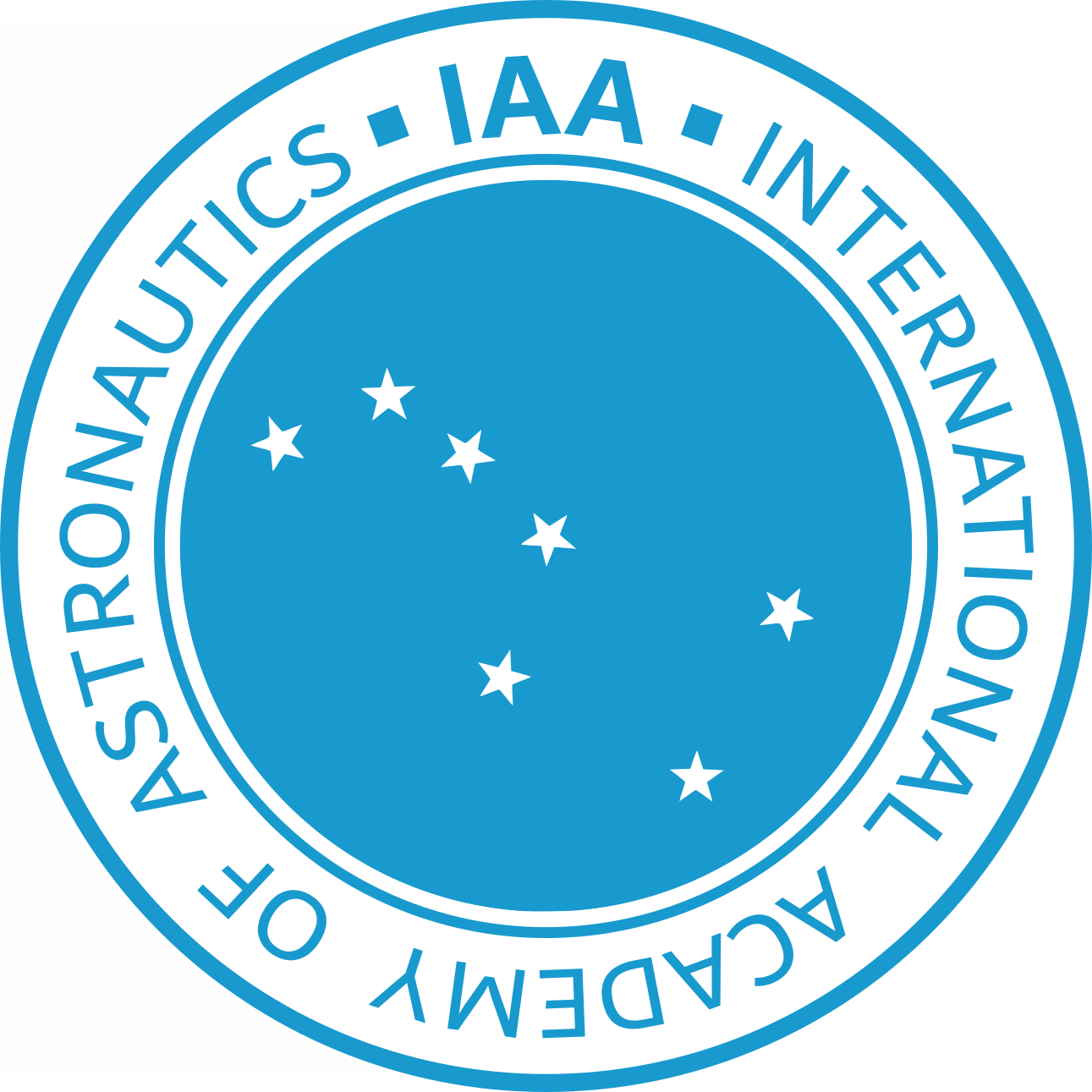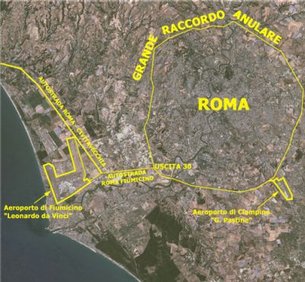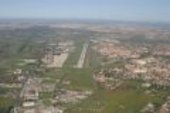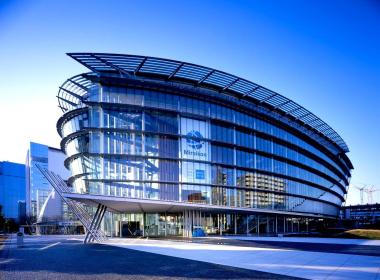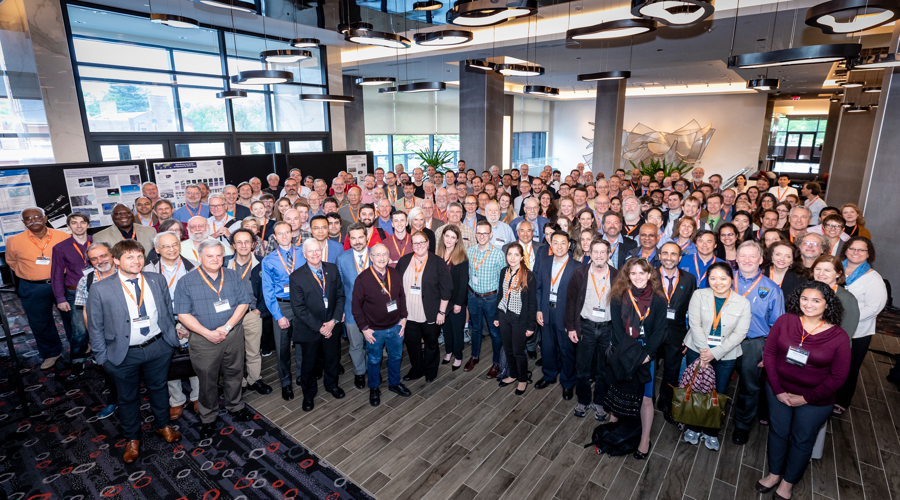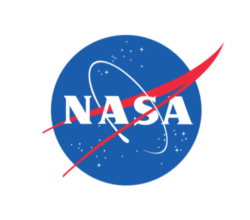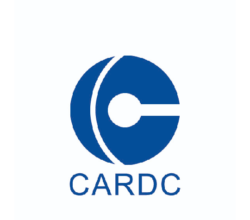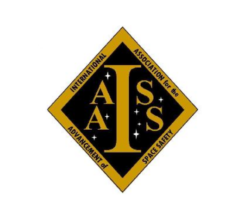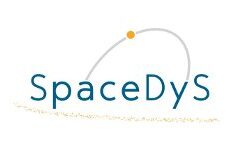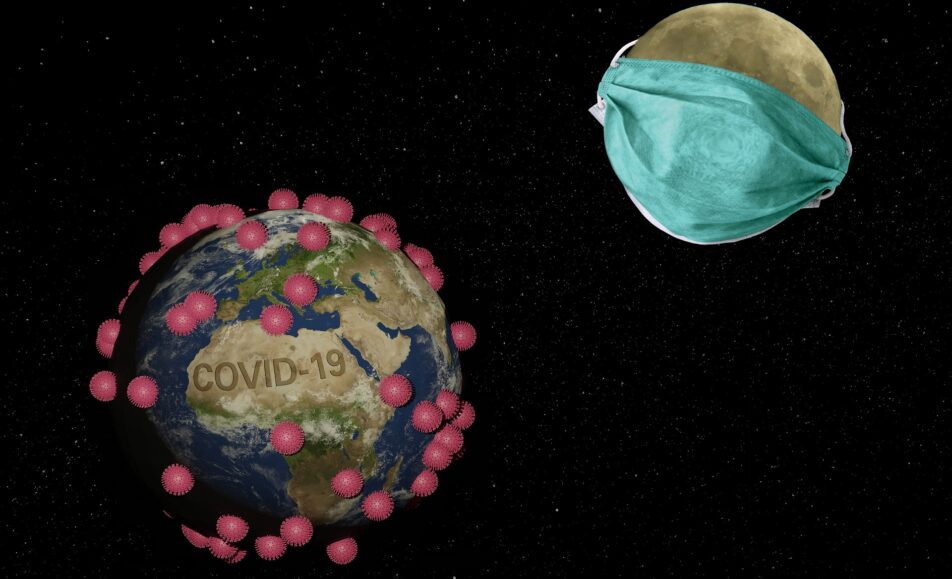8th IAA Planetary Defense Conference
3-7 April 2023, Vienna, Austria
At the Vienna International Centre and the Austrian Academy of Sciences, in cooperation with ESA, the Commission for Geosciences of the Austrian Academy of Sciences and UNOOSA
CONFERENCE REPORT
Detailed conference report
PROGRAMME-AT-A-GLANCE
Program
DETAILED PROGRAMME
Please find a detailed overview of the programme including abstracts, extended abstract and presentation documents
CONFERENCE MATERIALS
Conference materials – Decision-makers panel:
– The Near-Earth Objects and Planetary Defence brochure: https://www.unoosa.org/res/oosadoc/data/documents/2023/stspace/stspace73_0_html/st-space-073E.pdf
– The Decision-Tree: https://prezi.com/view/1Ts9wLHCOwIfngjeo1em/
– The Pocket reference: https://tinyurl.com/Draft-PDPR-2023
– The Decision-maker’s guide: https://tinyurl.com/Draft-PDDG-2023
VIDEOS of the conference
2 April, 2023
DART and Planetary Defense
3 April, 2023
1st meeting Outer Space: 8th IAA Planetary Defense Conference
2nd meeting Outer Space: 8th IAA Planetary Defense Conference
4 April, 2023
3rd meeting Outer Space: 8th IAA Planetary Defense Conference
4th meeting Outer Space: 8th IAA Planetary Defense Conference
5 April, 2023
5th meeting Outer Space: 8th IAA Planetary Defense Conference
6th meeting Outer Space: 8th IAA Planetary Defense Conference
6 April, 2023
7th meeting Outer Space: 8th IAA Planetary Defense Conference
8th meeting Outer Space: 8th IAA Planetary Defense Conference
7 April
9th meeting Outer Space: 8th IAA Planetary Defense Conference
Public events
“DART and Planetary Defence”:
Sunday, 2 April 2023, 4.30-8.00 p.m at the Austrian Academy of Sciences, Dr. Ignaz-Seipel-Platz 2, 1010 Vienna
IMAX Asteroid Hunters:
Wednesday, 5 April 2023, 8.15-10.30 p.m. at the Cineplexx Donau Zentrum, Wagramerstraße 79, 1220 Wien
Registration
In-person attendance is currently fully booked due to the maximum capacity limit of the conference room used. Via below registration link it is still possible to register for online participation.
Use the following link to complete your booking for the conference fees and events:
https://atpi.eventsair.com/23a01—8th-planetary-defense-conference/conference-registration
PDC 2023 – Conference Events & Fees
The conference events are organized at an additional fee of €400.00 for regular participants/presenters and € 200.00 for students/retirees/pensioners. The events and hospitality planned include:
2 April: Public event at the Austrian Academy of Sciences on DART
3 April: Conference Welcoming Reception
4 April: Poster viewing reception
5 April: IMAX film screening “ASTEROID HUNTERS” and Planetary Society program at the “Cinneplex Donauzentrum”
6 April: Conference Banquet at Wiener Rathauskeller
Coffee and tea during the conference
Registration for all conference events is required by in-person participants as part of your conference registration. Members of the public can register for the DART event and the IMAX film screening via the dedicated links.
Key session topics will include:
Ongoing and Upcoming Mission Highlights
Hypothetical Asteroid Threat Exercise https://cneos.jpl.nasa.gov/pd/cs/pdc23/
Key International and Policy Developments
Near-Earth Object (NEO) Discovery
Near-Earth Object (NEO) Characterization
Deflection / Disruption Modeling & Testing
Space Mission & Campaign Design
Impact Effects & Consequences
Disaster Management & Impact Response
Public Education and Communication
The Decision to Act: Political, Legal, Social and Economic Aspects
Schedule:
23 December 2022: Abstract Submission Deadline (Fully Extended)
20 January 2023: Author Acceptance Notifications Sent
20 March 2023: Deadline for Submitting Extended Abstracts / Full Manuscripts / Presentations / Posters
2 April 2023: Special Public Event Celebrating the DART Mission at the Austrian Academy of Sciences
3-7 April 2023: Planetary Defense Conference at the Vienna International Centre and Austrian Academy of Sciences
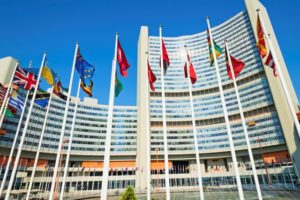

Programme–at–a–glance (April 6th update)
Sunday, 2 April 2023, 4.30-8.00 p.m
at the Austrian Academy of Sciences, Dr. Ignaz-Seipel-Platz 2, 1010 Vienna
Program Committee
2023 IAA PLANETARY DEFENSE CONFERENCE ORGANIZING COMMITTEE
Co-Chairs:
| Bill | Ailor | The Aerospace Corporation (Retired) |
| Brent | Barbee | NASA/Goddard Space Flight Center / University of Maryland |
| Gerhard | Drolshagen | University of Oldenburg |
| Alex | Karl | Space Applications Services |
| Nahum | Melamed | The Aerospace Corporation |
Members:
| Rudolf | Albrecht | |
| James (Gerbs) | Bauer | University of Maryland |
| Randy | Belll | The Aerospace Corporation |
| Bruce | Betts | The Planetary Society |
| Linda | Billings | Consultant to NASA’s Planetary Defense Coordination Office |
| Mark | Boslough | Los Alamos National Laboratory / University of New Mexico |
| Marina | Brozovic | Jet Propulsion Laboratory |
| Ian | Carnelli | ESA |
| Clark | Chapman | Southwest Research Intitute |
| Andrew | Cheng | The Johns Hopkins University Applied Physics Laboratory |
| Paul | Chodas | Jet Propulsion Laboratory |
| Jean-Michel | Contant | International Academy of Astronautics |
| R. | Daly | The Johns Hopkins University Applied Physics Laboratory |
| Doris | Daou | NASA/Planetary Defense Coordination Office |
| Fabrice | Dennemont | International Academy of Astronautics |
| Jessie | Dotson | NASA/Ames Research Center |
| Michael | Egan | NASA/HQ |
| Kelly | Fast | NASA/Planetary Defense Coordination Office |
| Dawn | Graninger | The Johns Hopkins University Applied Physics Laboratory |
| Mariella | Graziano | GMV Aerospace and Defence |
| Phil | Groves | Documentary Filmmaker, ASTEROID HUNTERS |
| Alissa | Haddaji | Harvard Law School |
| Joshua | Handal | NASA/HQ |
| Alan | Harris | Jet Propulsion Laboratory (retired) |
| Curtis | Iwata | The Aerospace Corporation |
| Lindley | Johnson | NASA/Planetary Defense Coordination Office |
| Thomas | Jones | Association of Space Explorers |
| Andrea | Kleinsasser | Austrian Federal Ministry for Innovation & Technology |
| Christian | Koeberl | University of Vienna |
| Romana | Kofler | United Nations Office for Outer Space Affairs (UNOOSA) |
| Detlef | Koschny | ESA and Chair of Astronautics, TU Munich/Germany |
| Peter | Kraan | ESA Conference Bureau Service Provider |
| Rob | Landis | NASA/Johnson Space Center |
| Leviticus (L.A.) | Lewis | DHS/FEMA |
| Ed | Lu | B612 Asteroid Institute / LEOLabs |
| Amy | Mainzer | University of Arizona |
| Irmgard | Marboe | University of Vienna |
| Stephan | Mayer | Austrian Research Promotion Agency |
| Patrick | Michel | Univ. Côte d’Azur; Observatory, Cote d’Azur, CNRS |
| David | Morrison | SETI Institute |
| Lea | Nagel | University of Vienna |
| Jan | Osburg | RAND |
| Cordula | Panosch | University of Vienna |
| Ryan | Park | Jet Propulsion Laboratory |
| Gisela | Poesges | Geopark Ries e. V., Nördlingen, Germany |
| Andy | Rivkin | The Johns Hopkins University Applied Physics Laboratory |
| Liu | Sen | China Aerodynamics Research and Development Center |
| Angela | Stickle | The Johns Hopkins University Applied Physics Laboratory |
| Megan | Syal | Lawrence Livermore National Laboratory |
| Marco | Tantardini | Consultant, former Space Policy Officer in the Office of the Italian Prime Minister |
| Karel | van der Hucht | SRON Netherlands Institute for Space Research |
| George | Vardaxis | The Aerospace Corporation |
| Lorien | Wheeler | NASA/Ames Research Center |
| Makoto | Yoshikawa | Japan Aerospace Exploration Agency (JAXA) |
| Bruno | Sarlli | NASA/Goddard Space Flight Center |
| Connor | Mulrenin | NASA/Goddard Space Flight Center |
| Richard | Moissl | ESTEC – European Space Research and Technology Centre |
| Juan | Cano | ESA/ESRIN NEO Coordination Centre (NEOCC), Planetary Defence Office |
| Joshua | Lyzhoft | NASA/Goddard Space Flight Center |
| Kai | Wünnemann | Museum für Naturkunde Berlin / Leibniz-Institute for Evolution and Biodiversity Science |
| Michael | Simpson | The Aerospace Corporation |
Andrea Kleinsasser, Austrian Ministry of Climate Action and Energy
Stephan Mayer, Austrian Research Promotion Agency, Aeronautics and Space Agency
Irmgard Marboe, University of Vienna
Christian Koeberl, Austrian Academy of Sciences and University of Vienna
Viktor Bruckman, Austrian Academy of Sciences
Rudolf Albrecht, Austrian Space Forum
Ludovic Ferriere, Natural History Museum Vienna
Thomas Hollensteiner, Permanent Mission of Austria to the United Nations (Vienna)
Romana Kofler, United Nations Office for Outer Space Affairs
Exercise
The 2023 PDC Hypothetical Asteroid Impact Scenario
A hypothetical asteroid impact scenario will be presented at the 2023 IAA Planetary Defense Conference (PDC).
Although this scenario is realistic in many ways, it is completely fictional and does NOT describe an actual potential asteroid impact.
Please see the link below:
https://cneos.jpl.nasa.gov/pd/cs/pdc23/
Exercise participants, especially those less familiar with Planetary Defense, are also encouraged to review these two documents prior to the exercise:
– Planetary Defense Pocket Reference (draft): https://tinyurl.com/Draft-PDPR-2023
– Planetary Defense Decisionmaker Guide (draft): https://tinyurl.com/Draft-PDDG-2023
Media are encouraged to register for the Conference.
Contacts for Media:
Media are invited to register and they will be contacted by the organizers.
Information for media:
https://www.unoosa.org/oosa/en/informationfor/media/2023-unis-ma-324.html
Find the leaflet including topic areas for papers...
Leaflet
Leaflet is now available: pdf version leaflet.
Call for Papers
Papers are solicited in the areas listed below for the 2023 IAA Planetary Defense Conference, hosted by the United Nations Office for Outer Space Affairs, in cooperation with the European Space Agency, the Commission for Geosciences of the Austrian Academy of Sciences, and under the auspices of the International Academy of
Astronautics (IAA). Papers/posters eligible for the student competition should be indicated as such during submission.
Limited financial support for students may be available; please contact conference chairs.
A broad theme of the conference is to highlight technologies, techniques, missions, data sets, and processes that have been and must be developed to support planetary defense and strengthen international cooperation for protecting the Earth from impact hazards associated with asteroids and comets. Special highlights include recent space missions related to planetary defense, a hypothetical asteroid threat exercise, and panel discussions by decision-makers, legal experts, disaster managers and others.
Topic areas for papers include:
Ongoing and Upcoming Mission Highlights
• Current and proposed space missions to inform and test planetary defense technologies
• Highlights of DART, Hera, Hayabusa2, OSIRIS REx/APEX, NEO Surveyor, Apophis, etc.
Hypothetical Asteroid Threat Exercise
• The details of the hypothetical asteroid threat exercise will soon become available in full at
https://cneos.jpl.nasa.gov/pd/cs/pdc23/
• Any contributions to the topics below based upon the exercise are welcome
Key International and Policy Developments
• Policy planning and developments towards an international planetary defense strategy
• National and international activities, strategies and plans for planetary defense
• Proposal for International Year of Planetary Defense in 2029
Near-Earth Object (NEO) Discovery
• Current NEO survey progress, requirements, and goals for future surveys
• Astronomical and space-based techniques for discovery of NEOs
• Prospects for future NEO survey systems and efforts (e.g., LSST)
Near-Earth Object (NEO) Characterization
• Findings related to characterizing NEO physical, dynamical, and orbital properties.
• Characterization of properties most crucial to planetary defense mission success and disaster preparation and mitigation planning.
• Technologies to characterize NEOs via remote sensing and spacecraft flyby/rendezvous/landing.
• Current and planned flight missions to NEOs; Opportunities from NEO close approaches.
Deflection / Disruption Modeling & Testing
• Results of modeling/experimentation that characterize effects of proposed NEO deflection and disruption
techniques and technologies
• Progress on key technologies needed to deflect, disrupt, or otherwise mitigate hazardous NEOs
Space Mission & Campaign Design
• Development and validation of critical technologies for planetary defense.
• Designs for planetary defense flight validation missions.
• Design of in-space mission campaigns to respond to hazardous NEOs (reconnaissance, characterization, mitigation).
Impact Effects & Consequences
• Hazards of individual impactors; ensemble hazard integrated over the predicted population of impactors
• Analysis tools that could aid decision makers.
• Process of atmospheric break-up and airbursts for a variety of NEO types and lessons learned based on Tunguska and Chelyabinsk super-bolides
• Transition from regional to global effects as a function of impactor size, location, and other factors.
• New results on the effects of ocean and land NEO impacts and related damage footprints.
• Short- and long-term post-impact effects on the atmosphere, environment, near-Earth space and space systems (e.g., communications)
Disaster Management & Impact Response
• Lessons learned from past natural disaster responses, exercises, alerts, public education, risk communications strategies and warnings, and their application to Planetary Defense Management.
• Review of current and near-future disaster response plans and preparations specific to NEO impacts, incl. communication strategies for warning and informing decision makers, the general public and others.
• International perspective on disaster management in view of regional and national assets.
Public Education and Communication
• Current status of planetary defense / NEO-related communication and public education efforts, including dissemination, alerts, public engagement, student programs, outreach initiatives, etc.
• Concepts for improving trusted NEO / planetary defense public education and communication.
The Decision to Act: Political, Legal, Social and Economic Aspects
• Outlook on current and future national and international planetary defense / NEO-response policies and decision-making processes, including any envisioned participation of nations’ military organizations in planetary defense.
• International coordination and collaboration, and distribution of responsibilities for planetary defense.
• Legal aspects of NEO mitigation.
• Cost effectiveness of mitigation options.
• Short and long term economic, political, and social consequences of a serious threat or an impact
• Ethics of Planetary Defense.
STUDENT COMPETITION: One or more of the best student paper(s)/poster(s) will be awarded a prize. The aim
of the student competition is to help promote academic work and informed political debate by enhancing research
and general understanding essential for sound decision making on NEO impact threats in years to come.
Find the submission process including templates and authors guidelines
2023 Planetary Defense Conference
Abstract Submission (closed)
Technical paper abstracts (250 to 500 words in length) in the areas described in the Call for Papers or related to planetary defense were accepted electronically through the conference website.
Please be sure to designate the topic area your paper addresses (see topics listed in the Call for Papers).
Please also indicate whether the abstract is eligible for the student competition (see below). The deadline for receipt of abstracts is December 23, 2022 (Fully Extended).
Letters of official acceptance will be mailed on or before January 20, 2023.
PAPERS: Full-length manuscripts or two-page extended abstracts are due by close of business on March 20, 2023. Revisions and corrections will be accepted within two weeks after the end of the conference. The format for papers is specified on the conference website. Accepted papers (including two-page extended abstracts and
poster papers) will be published on the official conference proceedings and hosted at the IAA website. Full-length manuscripts may be considered for publication in a special issue of Acta Astronautica.
Template files
Please download the PDC 2023 abstract template file.
Poster size
Maximum poster size is 120 cm width x 150 cm height
Registration link
Registration
The 2023 IAA Planetary Defense Conference will be held in Vienna at the Vienna International Centre from 3-6 April and at the Austrian Academy of Sciences on 7 April. A pre-conference event on the DART mission will be held on 2 April at the Austrian Academy of Sciences, which will also be open to the public and media. A number of conference events are planned to be held alongside the Conference.
During the registration process you will indicate if you will be present in-person in Vienna or join online. If you choose to present in-person in Vienna a twostep process is requested. After officially registering you will receive a confirmation with a link to complete the process by booking the conference side events and fees. The official conference side events and fees are:
€ 400.00 (regular participants/presenters)
€ 200.00 (students/retirees/pensioners)
Registration Link: https://atpi.eventsair.com/23a01—8th-planetary-defense-conference/conference-registration
The Conference will be held at the Vienna International Centre (VIC), Wagramerstrasse 5, Vienna, Austria.
And at the Austrian Academy of Sciences, Dr. Ignaz Seipel-Platz 2, Vienna, Austria.
If you require a room for the 1st of April outside the room blocks, please contact the hotel directly to check availability and book the room directly with the hotel. Rooms on the 1st of April are based upon availability and current public rates.
IBIS Budget Wien Messe **
Lassallestrasse 7
1020 Vienna, Austria
Check-in possible from April 2nd 2023
Check-out possible until April 8th 2023
€ 75.00 per room per night Single use, including breakfast
€ 83.50 per room per night Double use, including breakfast
Rates can be booked via the enclosed special booking form.
Arcotel Kaiserwasser ****
Wagramer Strasse 8
1220 Vienne, Austria
Check-in possible from April 2nd 2023
Check-out possible until April 8th 2023
€ 149.00 per room per night Single use, including breakfast
€ 159.00 per room per night Double use, including breakfast
Rates can be booked via the following website: www.kaiserwasser.arcotel.com
During booking provide the Promo Code: IAAPDC
NH Danube City ****
Wagramer Strasse 21
1220 Vienne, Austria
Reservations from now on are only available upon availability and at the standard rates. Reservations from now on can be made via the following link;
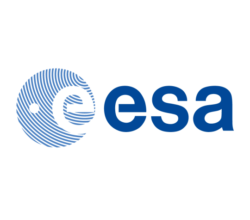
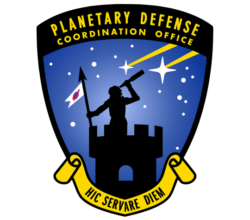
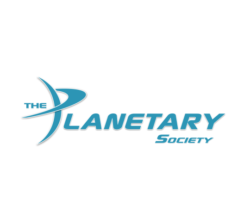
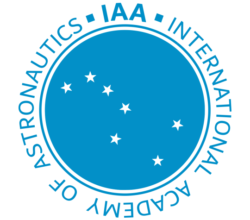
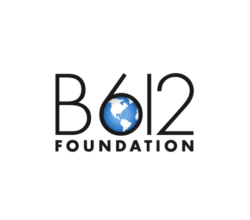

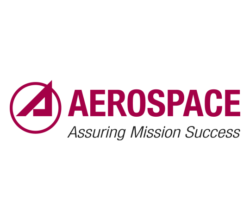
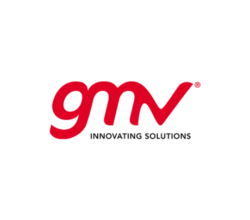
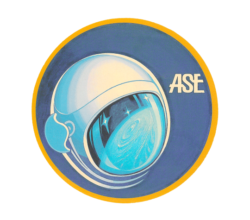
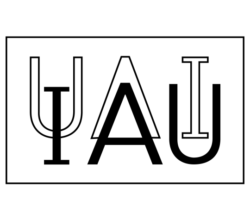
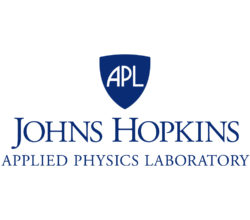


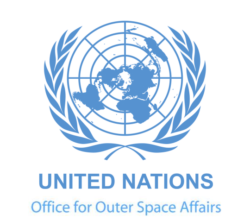
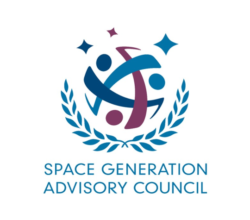

2009 Granada
1st IAA Planetary Defense Conference, 27-30 April, 2009, Granada, Spain
2009 Conference papers and presentations are available
Session 1: Discovery, Tracking, Characterization
• Status of the discovery program
• Options for enhancing detection and tracking of near Earth objects
• Latest information on physical characteristics of asteroids (including Apophis) and comets
• Recent Earth and Mars close approaches
• Characterization of the types of threats faced: approach trajectories, impact probabilities, object sizes, likely warning times
• Radar tracking and physical characterization of Near Earth Asteroids
• Cratering on Earth and Mars as it relates to consequences of impact
Session 2: Mission & Campaign Design
• Information required to increase the likelihood of success for mitigation or close approach missions
• Deflection campaign designs that increase the probability of overall mission success
• Intercept orbits and mission time requirements
• Design of missions to characterize, track, or deflect threatening Near Earth Objects (NEOs)
• Engineering considerations for developing and operating a deflector spacecraft (e.g., rapid spacecraft development, integration, testing; autonomy; communications; guidance and control)
Session 3: Deflection Technologies & Simulations
• Technologies that might be used against a short term (2 month to 10 year warning), medium term (10-20 year warning), long term (>20 years warning) threats
• Effectiveness vs. object size, shape, properties
• Interceptor/diverter technology requirements and current status (propulsion, guidance, etc.)
Session 4: Neo Impacts & Consequences
• Estimates of costs of impacts: financial, social, casualties, etc.
• Current information on past NEO impacts (e.g., Tunguska)
Session 5: Policy, Preparedness, Deciding To Act
• Factors that will influence the decision to take or not take action to mitigate a threat
• Evolution of a threat (detection, decision to act, action)
• Disaster preparation and response; lessons from recent disasters
• Public notice, public perception, education
• Suggested thresholds for deflection actions
Session 6: What’s Happening Now?
• Status of current UN and government-level policy discussions
• Specific ongoing and funded activities that support planetary defense
2011 Bucharest
2nd IAA Planetary Defense Conference, 09-12 May, 2011, Bucharest, Romania
2011 Conference papers and presentations are available
Conference report, key points and recommendations from the 2011 IAA Planetary Defense Conference
FINAL PROGRAM
Monday, 9 May 2011
08:00 Registration
09:00 Welcoming remarks
09:30 Keynote: Dr. Anders Sandberg
Session 1 History & Current Status
Chairs: Ray Williamson, Detlef Koschny
10:30 Historical Overview of the Cosmic Impact Hazard
David Morrison (UNITED STATES)
11:00 US/NASA NEO Program Status and Plans
Lindley Johnson (UNITED STATES)
11:30 The Near-Earth Objects Segment of the European Space Situational Awareness Prog
Gerhard Drolshagen1; D. Koschny1; N. Bobrinsky2 1(NETHERLANDS); 2(SPAIN)
12:00 Introduction to UN COPUOS and NEOs
Richard Crowther (UNITED KINGDOM)
12:20 A global Approach to Near-Earth Object Impact Threat Mitigation
Harris, A. DLR (GERMANY)
Session 2 Discovery & Tracking Resources and Plans
Chairs: Alan Fitzsimmons, Lindley Johnson
14:00 Update of Estimated NEO Population and Current Survey Completion
Alan Harris (UNITED STATES)
14:25 Comparing the Earth Impact Flux from Comets and Near-Earth Asteroids
Donald Yeomans; D.K. Yeomans; A.B. Chamberlin (UNITED STATES)
14:50 The Catalina Sky Survey, Past, Present, and Future
Edward Beshore; S. M. Larson (UNITED STATES)
15:15 The Pan-STARRS search for Near Earth Asteroids – present status and future plans
Richard Wainscoat (UNITED STATES)
16:10 Near Earth Object Detection with LSST
R. L. Jones (UNITED STATES)
16:35 Gaia Astrometry of Near-Earth Objects
Daniel Hestroffer; D. Bancelin; W. Thuillot; P. Tanga (FRANCE)
17:00 The Near Earth Object Surveillance Satellite (NEOSSat) Will Search near-Sun along the Ecliptic Plane to Efficiently Discover Objects of the Aten and Atira Orbital Classes
Alan Hildebrand1; B. Gladman1; E.F. Tedesco2; R.D. Cardinal1; P. Gural2; M. Granvik2; S.M. Larson2; K.A. Carroll1; P.G. Brown1; P. Wiegert1; P. Chodas2; B.J. Wallace1; S.P. Worden2; J.M. Matthews1 1(CANADA); 2(UNITED STATES)
17:25 A Space-Based Near-Earth Object Survey Telescope in Support of Human Exploration, Solar System Science, and Planetary Defense
P. A. Abell; R. G. Mink; J. B. Garvin; B. W. Barbee; D. Mazanek; D. R. Komar; D. Adamo; A. Cheng; A. S. Rivkin; K. Hibbard; K. L. Miller; R. Dissly; A. Mainzer; D. K. Yeomans; L. N. Johnson (UNITED STATES)
Evening:
Welcome reception at The Scientists Club
Tuesday, 10 May 2011
09:00 Intro & Welcome
Session 3 Potentially Hazardous Objects – Recent Progress
Chairs: Don Yeomans, Giovanni Valsecchi, Pedro Gutierrez
09:10 Physical Properties of NEOs that Inform Mitigation
Patrick Michel1; 1(FRANCE)
09:35 NEOWISE – An Infrared View of NEOs and the Solar System
Amy Mainzer; J. Bauer; T. Grav; R. M. Cutri; J. Dailey; J. Masiero; R. S. McMillan; R. Walker; E. Wright; D. Tholen (UNITED STATES)
10:00 Radar Tracking and Near-Earth Object Characteristics
Lance Benner; L. A. M. Benner (UNITED STATES)
10:25 Orbital Distribution of Near-Earth Objects
Vacheslav Emel’yanenko; Sergey Naroenkov; Boris Shustov (RUSSIAN FEDERATION)
Coffee break
11:20 1999 RQ36 Impact Risk and Modeling the Long-Term Yarkovsky Effect
Andrea Milani; F. Bernardi; D. Farnocchia; G.B. Valsecchi (ITALY)
11:45 Asteroid Impact Hazard Assessment Over Long Time Intervals
Steve Chesley (UNITED STATES)
12:10 The search for Earth impacting asteroids by the Pan-STARRS
Veres Peter1; Robert Jedicke2; Mikael Granvik2; Steve Chesley2; Richard Wainscoat2; Shinsuke Abe3; Larry Denneau2; Tommy Grav2 1(SLOVAKIA); 2(UNITED STATES); 3(TAIWAN)
12:35 Keyholes as Providers of Deflection Leverage
P.W. Chodas (UNITED STATES)
13:00 Lunch
Session 4 Impact Consequences & Education
Chairs: Mark Boslough, Alan Harris
14:30 Consequences of the Tunguska Impact and their Interpretation
Giuseppe Longo; L Gasperini; E Bonatti; C Stanghellini; R Serra (ITALY)
15:00 Creating Awareness – The Impact Hazard in Public Education Curricula Content, Students’Interests and Concepts and Educational Implementation
M. Mueller (GERMANY)
15:30 New Classification Scale for Impact Consequences
Maria Gritsevich; V. P. Stulov (RUSSIAN FEDERATION)
Coffee break
16:10 Airburst Warning and Response
Mark Boslough (UNITED STATES)
16:40 Calculation of the Impact of a Small Asteroid on a Continental Shelf
Galen Gisler (NORWAY)
17:10 Dynamics of Tsunamis Generated by Asteroid Impact in the Black Sea
Dragos Isvoranu; S Danaila; V Badescu (ROMANIA)
17:40 The Protective Role of the Earth’s Atmosphere against the Threat of Asteroids
Jean-Luc VERANT; J.-M. MOSCHETTA; L. FERRIER (FRANCE)
Wednesday, 11 May 2011
09:00 Introduction & Welcome
Session 5 Campaign Planning
Chairs: Nahum Melamed, A.C. Charania
09:10 AsteroidSQUADS/iSSB – a Synergetic NEO Deflection Campaign and Mitigation Effects Test Mission Scenario
Jan Thimo Grundmann; S. Mottola; M. Drobczyk; R. Findlay; M. Hallmann; A. Heidecker; R. Kahle; E. Kheiri; A. Koch; O. Mierheim; F. Nohka; D. Quantius; M. S van Zoest (GERMANY)
09:30 Target Selection and Mission Analysis of Human Exploration Missions to Near-Earth Asteroids
Aline Zimmer; E. Messerschmid (GERMANY)
09:50 Effects of NEO Composition on Deflection Methodologies
Yohei Sugimoto; G. Radice; J. P. Sanchez (UNITED KINGDOM)
10:10 Mission Concepts and Operations for Asteroid Mitigation Involving Multiple Gravity Tractors
Cyrus Foster; J Bellerose; D Mauro; B Jaroux (UNITED STATES)
Coffee break
11:00 Development of a Handbook and an On-Line Tool on Defending Earth against Potentially Hazardous Objects
Nahum Melamed (UNITED STATES)
11:20 ESA NEO missions studies: what have we learned?
Andres Galvez, Ian Carnelli (SPAIN)
11:40 Robotic and Human Exploration/Deflection Mission Design for Asteroid 99942 Apophis
Sam Wagner; B. Wie (UNITED STATES)
12:00 Near Earth Object Interception Using Nuclear Thermal Rocket Propulsion
Steven Howe; X. Zhang; C. Granier; E. Ball; L. Kochmanski (UNITED STATES)
Lunch
Session 6 Mission Planning & Technologies
Chairs: Mariella Graziano, Ian Carnelli, Bong Wie
14:00 Measuring the Momentum Transfer for Asteroid Deflections
Kevin Housen; K.A. Holsapple (UNITED STATES)
14:20 Influence of intermediate-scale structures on Yarkovsky and YORP effects
Oleksiy Golubov1; Yurij N. Krugly2 1(GERMANY); 2(UKRAINE)
14:40 Improved Navigation Techniques for Asteroid Landers and Impactors
Andrew Klesh; T. Kubota; T. Yoshimitsu (JAPAN)
15:00 Design Options for NEO Missions
Jesus Gil-Fernandez; R. Cadenas; T. Prieto; D. Escorial (SPAIN)
15:20 Numerical Models of Hazard Mitigation by Nuclear Stand-Off Burst
Catherine Plesko; R. P. Weaver; W. F. Huebner (UNITED STATES)
15:40 Limits on the Use of Nuclear Explosives for Asteroid Deflection
Megan Bruck (Brown University) and David Dearborn (LLNL) (UNITED STATES)
Coffee break
16:30 Hypervelocity Nuclear Interceptors for Asteroid Deflection and/or Disruption
Bong Wie (UNITED STATES)
16:50 Gravity Tractor Strategies for Deflecting a Binary Asteroid System
Julie Bellerose; Cyrus Foster; David Mauro; Belgacem Jaroux (UNITED STATES)
17:10 Meeting Objectives for Human Exploration of Near Earth Objects: First Steps in Understanding How to Explore
Victoria Friedensen; P. Abell; B. Drake; P. Guirgis; K. Larman; D. Mazanek; D. Reeves (UNITED STATES)
17:30 The Ion Beam Shepherd: A New Concept for Asteroid Deflection.
Claudio Bombardelli; Jesus Pelaez; Eduardo Ahedo (SPAIN)
18:10 Outline of Hayabusa-2, next asteroid sample return mission of Japan
Makoto Yoshikawa; H. Minamino; S. Nakazawa; M. Abe; Y. Tsuda; J. Kawaguchi (JAPAN)
Evening: Conference Dinner & Student Award Ceremony at the The Diplomatic Club
Thursday, 12 May 2011
09:00 Intro & Welcome
Session 7 Student Session
Chairs: Mariella Graziano, Alex Karl, Dario Izzo
09:00 On Testing Laser Ablation Processes for Asteroid Deflection
Alison Gibbings; M Vasile; J-M Hopkins; D Burns (UNITED KINGDOM)
09:30 Detecting Radiation Pressure on NEOs: The Case of 2009 BD
Marco Micheli; D. J. Tholen; G. T. Elliott (UNITED STATES)
09:50 NEOMiSS: A Near Earth Object decision support tool
Charlotte Norlund1; H. G. Lewis1; P. M. Atkinson1; J. Y. Guo2 1(UNITED KINGDOM); 2(UNITED STATES)
10:10 The Performances of a Wide Survey on a Population of Impactors
D. Farnocchia; F. Bernardi; A. Milani (ITALY)
Coffee break
11:00 Near Earth Asteroids Orbits from Gaia and Ground-Based Observations
D. Bancelin, D. Hestroffer, W. Thuillot IMCCE, Paris Observatory (FRANCE)
11:20 Nuclear Fragmentation/Dispersion Modeling and Simulation of Hazardous Near-Earth Objects
Brian Kaplinger; B. Wie; D. Dearborn (UNITED STATES)
11:40 Development Of Mission Design Process For Collision Avoidance Of Near Earth Objects
Nitin Kumar Mishra; G Patel (INDIA)
12:00 POSTER SESSION
Lunch
Session 8 Legal Policy, Political Framework for Planetary Defense
Chairs: Frans von der Dunk, Brian Weeden
14:00 Recommendations of the U. S. NRC Study on NEOs
Michael F. A’Hearn (UNITED STATES)
14:25 Progress of NEO Activities Within UN COPUOS
Sergio Camacho (UNITED STATES)
14:50 Towards National NEO Program
B. Shustov (RUSSIAN FEDERATION)
15:15 US Government Policy and Approach to Planetary Defense
Lindley Johnson (UNITED STATES)
Coffee break
16:05 PANEL SESSION: Discussion & Next Steps
> Summary of key points from presentations
> Discussion of next steps

3rd IAA Planetary Defense Conference
Protecting our planet from impacts by asteroids and comets
Conference videos available at: http://livestream.com/pdc2013
2013 Conference abstracts, papers and presentations are available below
2013 Conference report is available
2013 Post Exercise report is available
|
High Country Conference Center, Flagstaff AZ, USA
|
The International Academy of Astronautics hold its third conference “Gathering for Impact!” from 15-19 April, 2013 in Flagstaff, Arizona, USA.
The conference included an exercise where participants simulated the decision-making process for developing deflection and civil defense responses to a hypothetical asteroid threat.
|
Official Media Sponsor
Program
Print pdf version of the program as of April 14, 2013
Planetary Defense Conference program:
Sunday, April 14, 2013
Special Session: Chelyabinsk Event
Chair: David Morrison
First Scientific Session on the Chelyabinsk Bolide:
A special session on the Chelyabinsk event of February 15 will be held at the beginning of the Planetary Defense Conference in Flagstaff, AZ, April 14-19. In view of wide public and press interest in this unique meteor strike, this special session is open to the public as well as those registered at the Conference. It will be the first scientific analysis of what happened on February 15, and the implications for planetary defense generally. Organizers of the session are David Morrison, Mark Boslough, Clark Chapman, and Alan Harris. The program is held at the High Country Conference Center in Flagstaff.
1700 Conference Registration at Conference Center
1900 Special Session: Preliminary Look at the Chelyabinsk Event
1900 Opening Remarks, David Morrison, Session Chair
IAA-PDC13-10-01 A Geologic and Meteoritic Perspective of Impact Airbursts and
1910 Insights into the Chelyabinsk Event
David Kring (Lunar and Planetary Institute)
IAA-PDC13-10-02 The Chelyabinsk Airburst: A Preliminary Overview of Observations
1935 Peter Brown (Western Ontario University)
IAA-PDC13-10-03 The Trajectory and Orbit of the Chelyabinsk Impactor
2005 Paul Chodas (JPL) & Steven Chesley (JPL)
IAA-PDC13-10-04 Computational Simulations of Chelyabinsk and Tunguska Airbursts
2025 Mark Boslough
IAA-PDC13-10-05 A Two-Week Field Study of the Chelyabinsk Impact
2050 Peter Jenniskens (SETI Institute), Olga P. Popova (IDG RAS), Vadislav
V. Emel’yanenko & Anna Kartashova (Inst. of Astronomy RAS), Evgeny Biryukov
(South Ural State Univ. Chelyabinsk), Sergey Khaibrakhmanov & Alexandr Dudorov
(Chelyabinsk State University), & Dmitriy Glazachev (IDG RAS)
2110 Panel Discussion and Audience Q&A
Alan Harris, Chair
Day 1 Monday, April 15, 2013
0700 Breakfast
0700 Registration
0810 Morning speakers upload and check presentations
0900 Welcoming Remarks and Technical Comments, Bill Ailor
0910 Welcoming Remarks and Technical Comments, Richard Tremayne-Smith
0920 Welcome address, William Grabe, NAU Vice-President for Research
0930 IAA and Planetary Defense, Jean-Michel Contant, IAA Secretary General
0940 Concluding Remarks and Logistic Instructions, David Trilling
0945 Break
Monday, April 15, 2013, 1000-1200
Session 1: Background
Session Chair: Paul Miller
IAA-PDC13-01-01 Historical Perspectives on Planetary Defense
(abst.) (pres.)
1000 David Morrison
IAA-PDC13-01-02 United Nations recommendations for an international response to the NEO impact
(pres.)
1020 Threat
Sergio Camacho
IAA-PDC13-01-03 The NEO Precursor Services of ESA’s Space Situational Awareness Programme
(abst.) (pres.)
1040 Detlef Koschny
IAA-PDC13-01-04 On The National Program of Counteraction Space Threats
(abst.) (pres.)
1100 Boris Shustov
IAA-PDC13-01-05 NASA’s Near Earth Object Program and Activities
(pres.)
1120 Lindley Johnson
IAA-PDC13-01-06 Neoshield: Progress Towards an International NEO Mitigation Program
(abst.) (pres.)
1140 Alan Harris (DLR)
1245 Afternoon speakers upload and check presentations
Monday, April 15, 2013, 1315-1515
Session 2: Discovering NEOs – The State of the Art
Session Chairs: Robert Jedicke and Alan Fitzsimmons
IAA-PDC13-02-01 Source Regions for Near Earth Objects
(pres.)
1315 Mikael Granvik
IAA-PDC13-02-02 Near-Earth Object Survey Summary – The Minor Planet Center Perspective
(abst.) (pres.)
1330 Timothy Spahr
IAA-PDC13-02-03 The NEO Surveys
(abst.) (pres.)
1350 Don Yeomans
IAA-PDC13-02-04 Existing and Expected Near-Earth Object Follow-up Capabilities
(abst.) (pres.)
1410 Eileen Ryan
IAA-PDC13-02-05 Asteroid Terrestrial-impact Last Alert System – ATLAS
(abst.) (pres.)
1430 John Tonry
IAA-PDC13-02-06 NEOCAM: The Near-Earth Object CAMera
(abst.) (pres.)
1445 Amy Mainzer
IAA-PDC13-02-07 The Sentinel Space Telescope – Overview and Status
(abst.) (pres.)
1500 Ed Lu
1515 Break
Monday, April 15, 2013, 1545-1820
Session 3: NEO Physical Characterization
Session Chairs: Alan Harris (DLR) and Line Drube
IAA-PDC13-03-01 Looking into asteroid interiors by astronomical observations
(pres.)
1545 David Polishook
IAA-PDC13-03-02 Ground-based Optical Observations of NEO Fly-bys
1610 Nicholas Moskovitz
IAA-PDC13-03-03 What do we know about asteroid interiors? What matters for mitigation?
(pres.)
1630 Keith Holsapple
IAA-PDC13-03-04 The Strength of Small Rubble Pile Asteroids
(pres.)
1655 Dan Scheeres
IAA-PDC13-03-05 The YORP Effect on Rubble Piles: How Centrifugal Reshaping of Small Aggregates Kills the YORP Cycle
(pres.)
1715 Tom Statler
IAA-PDC13-03-06 Relevance of Asteroid Shape and Rotational Properties to Impact
1735 Mitigation Strategies
Ivan Debono
IAA-PDC13-03-07 Nuclear Deflection of PHOs as function of burst height, yield, and composition
(pres.)
1755 Catherine Plesko
1820 End Day 1
1830 Welcome reception
Day 2 Tuesday, April 16, 2013
0700 Breakfast
0800 Registration
0810 Morning speakers upload and check presentations
Tuesday, April 16, 2013, 0830-1820
Session 3: Continued (NEO Physical Characterization)
Session Chairs: Alan Harris (DLR) and Line Drube
IAA-PDC13-03-08 Physical Properties of Near-Earth Objects From Radar Observations
(pres.)
0830 Lance Benner
IAA-PDC13-03-09 Explore NEOs: The Warm Spitzer Near Earth Object Characterization Survey
(pres.)
0855 David Trilling
IAA-PDC13-03-10 Orbital and Absolute Magnitude Distribution of Hazardous Objects
0915 Vacheslav Emel’yanenko
IAA-PDC13-03-11 2011 AG5
(abst.) (pres.)
0935 Paul Chodas
1000 Break
Tuesday, April 16, 2013, 1030-1230
Session 4: Mitigation Techniques & Missions
Session Chairs: Bong Wie, Ian Carnelli, Mariella Graziano, Brent Barbee
IAA-PDC13-04-01 The ISIS Mission Concept: an Impactor for Surface and Interior Science
(abst.) (pres.)
1030 Steve Chesley
IAA-PDC13-04-02 Closed Loop Terminal Guidance Navigation for a Kinetic Impactor Spacecraft
(abst.) (pres.)
1050 Shyam Bhaskaran
IAA-PDC13-04-03 Numerical Study of the Asteroid Deflection Efficiency of the Kinetic Impactor
(abst.) (pres.)
1110 Approach in the NEOShield Project
Martin Jutzi
IAA-PDC13-04-04 Momentum transfer via direct impact: Experimental measurements
(abst.) (pres.)
1130 Kevin Housen
IAA-PDC13-04-05 Overview of Collisional-Threat Mitigation Activities at Lawrence Livermore
(abst.) (pres.)
1150 National Laboratory
Paul Miller
IAA-PDC13-04-06 GPU Accelerated 3-D Modeling and Simulation of a Blended Kinetic Impact
(abst.) (pres.)
1210 and Nuclear Subsurface Explosion
Brian Kaplinger
1230 Lunch Jim Green or John Grunsfeld, NASA
1345 Afternoon speakers upload and check presentations
IAA-PDC13-04-07 Conceptual Design of a Flight Validation Mission for a Hypervelocity Asteroid
(abst.) (pres.)
1400 Intercept Vehicle
Brent Barbee
IAA-PDC13-04-08 Target selection and Mission Design Tradeoffs for a HAIV (Hypervelocity Asteroid
(abst.) (pres.)
1420 Intercept Vehicle) Flight Validation Mission
Sam Wagner
IAA-PDC13-04-09 Mission Opportunities for the Flight Validation of the Kinetic Impactor Concept
(abst.) (pres.)
1440 for Asteroid Deflection
Sonia Hernandez
IAA-PDC13-04-10 AIDA: Asteroid Impact & Deflection Assessment
(abst.) (pres.)
1500 Andy Cheng
IAA-PDC13-04-11 BEAST: Low-Cost Demonstration Mission for Binary Asteroid Orbit Modification
(abst.) (pres.)
1520 Jesus Gil-Fernandez
1540 Break
IAA-PDC13-04-12 Human Expeditions to Near-Earth Asteroids: Implications for Exploration, Resource Utilization, Science, and Planetary Defence
(abst.) (pres.)
1610 Paul Abell
IAA-PDC13-04-13 The Near-Earth Object Human Space Flight Accessible Targets Study: an ongoing effort to identify Near-Earth Asteroid Destinations for Human Explorers
(abst.) (pres.)
1630 Brent Barbee
IAA-PDC13-04-14 Asteroid Retrieval Mission Concept – Trailblazing Our Future in Space and Helping to Protect Us From Earth Impactors
(abst.) (pres.)
Daniel Mazanek
IAA-PDC13-04-15 OSIRIS-REx Techniques Applied to Earth-Crossing Object Deflection
(abst.) (pres.)
1710 Ron Mink
IAA-PDC13-04-16 Trajectory and Mission Design for the Origins Spectral Interpretation Resource Identification Security Regolith Explorer (OSIRIS-REx) Asteroid Sample Return Mission
(abst.) (pres.)
1730 Mark Beckman
IAA-PDC13-04-17 MARCOPOLO-R: ESA Sample Return Mission to 2008 EV5 (A Potentially Hazardous Asteroid)
(abst.) (pres.)
1750 Antonella Barucci
1810 End day 2
Day 3 Wednesday, April 17, 2013
0810 Speakers upload and check presentations
Wednesday, April 17, 0830-1250
Session 4: Continued (Mitigation Techniques & Missions)
Session Chairs: Bong Wie, Ian Carnelli, Mariella Graziano, Brent Barbee
IAA-PDC13-04-18 Performance and Derived Requirements of a Gravity Tractor Serving as a
(abst.)
0830 Precursor to a Kinetic Impactor within the NEOSHIELD Study Framework
Julie Bellerose
IAA-PDC13-04-19 Development of an Asteroid Mission Design Software Tool for Planetary Defense
(abst.)
0850 George Vardaxis
IAA-PDC13-04-20 APOPHIS Express, a unique opportunity for a human visit to a NEO in 2029
(abst.)
0910 Jean-Yves Prado
IAA-PDC13-04-21 Experimental Characterization of the Thrust Induced By Laser Ablation on an Asteroid
(abst.)
0930 Alison Gibbings
IAA-PDC13-04-22 Light-Touch2: A Laser-Based Solution for the Deflection, Manipulation and
(abst.)
0950 Exploitation of Small Asteroids
Maximiliano Vasile
IAA-PDC13-04-23 Preliminary Development and Validation of Optical Navigation and Guidance Laws
(abst.)
1010 for Intercepting a Small Target Asteroid
Matt Hawkins
1030 Break
IAA-PDC13-04-24 Uncertainty Quantification in Impulsive Deflection Scenarios
(abst.) (pres.)
1100 Joe Wasem
IAA-PDC13-04-25 Lower Limits on NEO Deflection Velocities from Vapor and Blow-Off Momentum
(abst.)
1120 Kirsten Howley
IAA-PDC13-04-26 Hazardous Near-Earth Asteroid Mitigation Campaign Planning Based on Uncertain
(abst.) (pres.)
1140 Information on Fundamental Asteroid Characteristics
Yohei Sugimoto
IAA-PDC13-04-27 Catching a Rolling Stone: Dynamics and Control of a Spacecraft and an Asteroid
(abst.) (pres.)
1200 Carlos Roithmayr
IAA-PDC13-04-28 Optical Navigation and Fuel-Efficient Orbit Control Around an Irregular-Shaped Asteroid
(abst.)
1220 Tim Winkler
1240 Close of Session 4
All Day: Tours
Meteor Crater
Evening: Public Event
1900 Cline Library auditorium on the campus of Northern Arizona University
Bill Nye the Science Guy, Planetary Society CEO, internationally known speaker, comedian, author, scientist, and media personality will give a presentation guaranteed to please people of all ages as he talks about the importance of protecting the planet from dangerous asteroids.
Geoff Notkin and Steve Arnold, the Science Channel’s Meteorite Men, who travel all over the world, and with all kinds of gear to recovery meteorites. They will tell stories of their expeditions and what we learn about the Universe from the meteorites they recover.
The public session will be hosted by The Planetary Society’s Planetary Radio Live, with plans to post the entire session online, including questions from the audience, and to air excerpts on Planetary Radio. The evening session is free to all and is sponsored by NASA and The Planetary Society.
Day 4 Thursday, April 18, 2013
0700 Breakfast
0800 Registration
0810 Morning speakers upload and check presentations
Session 5: Impact Effects that inform Warning, Mitigation, & Costs
Thursday, April 18, 0830-1230
Session Chairs: Mark Boslough, Alan Harris (US), Clark Chapman
IAA-PDC13-05-01 Aerial and Surface Effects of Cosmic Airbursts: Recent Events and
(abst.) (pres.)
0830 Geological Archives
Marie-Agnes Courty
IAA-PDC13-05-02 High Velocity Impact Generated Air Blast
(abst.) (pres.)
0845 Charles Needham
IAA-PDC13-05-03 The NEA Impact that Created Meteor Crater, Arizona
(abst.) (pres.)
0900 David Kring
IAA-PDC13-05-04 Tsunami from Plume-Forming Collisional Airbursts
(abst.) (pres.)
0925 Mark Boslough
IAA-PDC13-05-05 Atmospheric and Water-Surface effects of small Impacts
0940 Galen Gisler
IAA-PDC13-05-06 Assessment of Threat of Small Impacts
(abst.)
1005 Vladimir Svetsov
1020 Break
IAA-PDC13-05-07 Calculating damage from asteroid impacts
(abst.) (pres.)
1050 H. Jay Melosh
IAA-PDC13-05-08 Flux of Impacts in Jupiter: From super bolides to large-scale meteorites
(abst.) (pres.)
1115 R. Hueso
IAA-PDC13-05-09 The value of enhanced NEO surveys
(abst.) (pres.)
1130 Alan Harris (USA)
IAA-PDC13-05-10 Infrastructure Consequence Analysis of Destructive Events
(abst.) (pres.)
1145 Barbara Jennings
IAA-PDC13-05-11 NEO Disaster Response and Recovery in the Context of Other Natural Hazards
(abst.) (pres.)
1210 Clark R. Chapman
1230 Lunch Robert J. Fenton, Jr., FEMA
1345 Afternoon speakers upload and check presentations
Session 6: Consequence Management & Education Thursday, April 18, 1400-1640
Session Chairs: Victoria Friedensen, Dave Baiocchi, A.C. Charania, Nahum Melamed, Ray Williamson
IAA-PDC13-06-01 A Communications Plan for an International Response to a Threatening NEO
(abst.) (pres.)
1400 Leonard David
IAA-PDC13-06-02 How Scientists And Prophets Have To Collaborate To Face A NEO Threat
(abst.) (pres.)
1420 Jacques Arnould
IAA-PDC13-06-03 Assessing the Full Spectrum of Communication Needs for Potentially Hazardous NEOs
(abst.) (pres.)
1440 Margaret Race
IAA-PDC13-06-04 Do’s and Don’ts of Communicating Effectively about NEO Hazards
(abst.) (pres.)
1500 Linda Billings
IAA-PDC13-06-05 A Decision Analysis Approach For Risk Management Of Near Earth Objects
(abst.) (pres.)
1520 Robert Lee
IAA-PDC13-06-06 Organizational vulnerability of a crisis organization in the context of an asteroid impact: methodology and tools to identify its weak points and promote its resilience
(abst.)
1540 Emmanuel Garbolino
IAA-PDC13-06-07 Possible Roles for the U.S. Geological Survey in Impact Hazard Analysis and Response
(abst.) (pres.)
1600 Lazio Kestay
IAA-PDC13-06-08 IGMASS – Planetary Market of Knowledge Without Linguistic, National or Cultural Borders
(abst.)
1620 Efim Malitikov
1640 Break
Introduction to Session 7 Thursday, April 18, 1710-1800
Session Chairs: Debbie Lewis, LtCol. Peter Garretson, L.A. Lewis
1710 Scenario Briefing Don Yeomans
1730 First injects Debbie Lewis
1800 End of day 4
Day 4 evening: Conference Banquet with a few words from a special guest: Carolyn Shoemaker
1900 Cocktail
1930 Banquet
Day 5 Friday, April 19, 2013
0700 Breakfast
0800 Registration
0825 Welcoming Remarks Bill Ailor
Session 7: Mitigation Response and Disaster Management Exercise
Friday, April 18, 0830-1230
Session Chairs: Debbie Lewis, LtCol. Peter Garretson, L.A. Lewis
0830 Start of exercise Debbie Lewis
1030 Group Reports All
1130 Exercise Debrief Debbie Lewis
1230 Lunch
Session 8: Panel Session & Discussion: Preparing the White Paper
Friday, April 18, 1345-1530
Moderator: William Ailor and Session Chairs representing each Session
1345 Summary from Session Chairs & Discussion Bill Ailor
1500 Final Remarks – Conclusions & announcement of 2015 venue
1530 End of Conference
———————————————————–
Poster Session
IAA-PDC13-01-01P Neodys: Recent Past, Present And Future Of Impact Monitoring Activities
F. Bernardi, F. Spoto, D. Farnocchia and A. Milani
IAA-PDC13-01-02P A New Business Plan For Planetary Defense
M. Boslough
IAA-PDC13-02-01P A Sensitive Search for NEOs with the Dark Energy Camera
L. Allen, D. Trilling, T. Axelrod, C. Fuentes, D. James, F. Valdes, B. Burt, A. Earle,
D. Herrera, S. Larson, E. Christensen, A. Gibbs, M. Trueblood, M. Brown
IAA-PDC13-02-02P The Shoemaker NEO Grant Program A Resource For Observers
B. Betts
IAA-PDC13-02-03P The Dark Energy Camera Near Earth Asteroid survey: Simulations and object linking
(abst.)
B. Burt, A. Earle, C. Fuentes, D. Trilling, L. Allen
IAA-PDC13-02-04P Status of the Catalina Sky Survey
(abst.)
E. Christensen, S. Larson, A. Boattini , A. Gibbs, A. Grauer, R. Hill, J. Johnson, R. Kowalski, R. McNaught, F. Shelly
IAA-PDC13-02-05P Inventorying The Number Of Potential Impactors In The Inner Solar System In The Diameter Range 10m To 100m With Interplanetary Spacecraft
G.L. Delzanno, H.R. Lai, C.T. Russell
IAA-PDC13-02-06P Optimizing A Wide Survey For Neos
G. Drolshagen, D. Koschny, T. Albin, L. Cibin, M. Chiarini
IAA-PDC13-02-07P Searching for the most dangerous near Earth asteroids in archival STEREO data
(abst.)
C. Fuentes, D. Trilling, M. Knight
IAA-PDC13-02-08P The NEOWISE Survey of the Near-Earth Asteroids
T. Grav, A. Mainzer, J. Bauer, R. Cutri, J. Masiero
IAA-PDC13-02-09P Population Of NEAs And Survey Completion
(abst.)
A.W. Harris
IAA-PDC13-02-10P The Astrometry Algorithm Used At The Klet Observatory
(abst.)
M. Honkova, M. Tichy, J. Ticha, M. Kocer
IAA-PDC13-02-11P Detecting sub-kilometer NEOs with ATLAS & PS2
R. Jedicke, E. Schunova, P. Veres, L. Denneau, R.J. Wainscoat, J. Tonry
IAA-PDC13-02-12P Discovery of Human Exploration Candidates with Sentinel
(abst.)
R. Linfield, H. Reitsema, Ed Lu, M. Buie
IAA-PDC13-02-13P Potentially Hazardous Long-Period Comets: Warning Times
(abst.)
L. Phelps, D.C. Boice
IAA-PDC13-02-14P Lincoln Near Earth Asteroid Research Program: 2013 and Beyond
R. Y. Shah, D. Woods, E. Pearce, J. Scott Stuart, G. Stokes
IAA-PDC13-02-15P A Concept of Cost-Saving Space System Designed For The Detection of NEO’s
(abst.)
A. Shugarov, B. Shustov, M. Martynov, V. Kudryashov
IAA-PDC13-02-16P Resonant Returns and Possible Collisions of Asteroids with the Earth
L.L. Sokolov, T.P. Borisova, N.A. Petrov, A.A. Vasiliev
IAA-PDC13-02-17P Study Of Celestial Bodies Motion Presenting Impact Risk With The Earth
I. Stroe, MI. Piso, A. Craifaleanu
IAA-PDC13-02-18P The Gaia ground-based follow-up network Gaia-FUN-SSO
W. Thuillot, D. Bancelin, P. Tanga, J. Hestroffer, D. Berthier, B. Carry, P. David,
P. Rocher, and the Gaia-FUN-SSO team
IAA-PDC13-02-19P Inaccuracies Affecting The Calculation Of Orbital Elements
(abst.)
M. Tichy, M. Honkova, J. Ticha(1), M. Kocer
IAA-PDC13-02-20P The pilot Warm Spitzer Near Earth Object Discovery Survey: Probing the size
D. Trilling, M. Delbo, J. Emery, G. Fazio, C. Fuentes, A. Harris, J. Hora,
M. Mommert, M. Mueller, H. Smith
IAA-PDC13-02-20P A Space Mission To Detect Imminent Earth Impactors
G.B. Valsecchi, E. Perozzi, A. Rossi
IAA-PDC13-02-21P Automatic Detection of Asteroids and Meteoroids – Wide Field Survey
P. Vereš, J. Tóth, R. Jedicke, J. Tonry, L. Denneau, R. Wainscoat, L. Kornoš, J. Šilha
IAA-PDC13-02-22P The Pan-STARRS1 search for Near-Earth Asteroids — present status and future plans
(abst.)
R. Wainscoat, L. Denneau, R. Jedicke, P. Veres, B. Bolin
IAA-PDC13-02-23P Prospects for detection of Potentially Hazardous Asteroids in the sweet spots
(abst.)
R. Wainscoat, L. Denneau, R. Jedicke, P. Veres, B. Bolin
IAA-PDC13-02-24P A Large Optical Arecibo for NEO Discovery
D. Steel, H. Steel
IAA-PDC13-02-25P Triangulation of Near Earth Objects by Earth Based Observers
S. Eggl
IAA-PDC13-02-26P Spacewatch Followup Observations of Hazardous Near-Earth Objects
R. S. McMillan, T. H. Bressi, J. V. Scotti, J. A. Larsen, M. L. Perry
IAA-PDC13-02-27P NEO Monitoring Using the World’s Largest Schmidt-Camera
B. Stecklum
IAA-PDC13-02-28P Offers on Creation of the International Planetary Defence System “Citadel”
V.V. Adushkin
IAA-PDC13-02-29P Charming Asteroids & Comets
D. Scheld
IAA-PDC13-02-30P Basic Asteroid Explorer (BAsE)
W. Wittholt
IAA-PDC13-03-01P The Need For NEO Close Mapping and Characterization
B. Archinal, R. Kirk, K. Edmundson, M. Rosiek, L. Gaddis, A. Nefian, T. Fong,
R. Beyer, J. Bellerose
IAA-PDC13-03-02P Framework to Assess the Micrometeoroid Flux Increase Due to Nuclear Surface Asteroid Deflection and the Threat Posed to Space Assets
E. Aretskin-Hariton, K. Abercromby
IAA-PDC13-03-03P Low Cost Characterization of Seismic Attenuation in Potentially Hazardous Asteroids
E. Asphaug
IAA-PDC13-03-04P Orbit Propagation of Asteroid (99942) Apophis From Recent Observations
D. Bancelin, D. Hestroffer, W. Thuillot
IAA-PDC13-03-05P Short Term Impact Risk Assessment for Asteroid 2011 Ag5
D. Bancelin, P. Pravec, M. Nolan
IAA-PDC13-03-06P Dynamical evolution and physical properties of six NEAs
M. Birlan, A. Nedelcu, M. Popescu
IAA-PDC13-03-07P Hazard Assessment for 101955 (1999 Rq36), the OSIRIS-REx Mission Target
S.R. Chesley, D. Farnocchia, P.W. Chodas, D. Vokrouhlicky, F. Spoto, A. Milani,
G.B. Valsecchi
IAA-PDC13-03-08P NEOshield – The Physical Properties of the Most Frequent Impactors
L. Drube, A. W. Harris, A. Barucci, M. Fulchignoni, D. Perna
IAA-PDC13-03-09P Scaling Near Earth Asteroid Characterization Rates
M. Elvis, C. Beeson, JL. Galache
IAA-PDC13-03-10P Yarkovsky Driven Impact Predictions: Apophis And 1950 DA
D. Farnocchia, S. R. Chesley, P. W. Chodas, A. Milani
IAA-PDC13-03-11P Choosing NEO Mission Targets Current Knowledge and Future Earth-Based Observation Opportunities
(abst.)
A. Fitzsimmons, A. W. Harris, S. Eggl, D. Perna
IAA-PDC13-03-12P Tangential Yorp Effect
(abst.)
O. Golubov, Y. N. Krugly
IAA-PDC13-03-13P Physical Properties of Meteoroids According to Middle and Upper Atmosphere Radar Measurements
(abst.)
M. Gritsevich, J. Kero, J. Virtanen, C. Szasz, T. Nakamura, J. Peltoniemi, D. Koschny
IAA-PDC13-03-14P The Physical Nature of Small Earth-Approaching Asteroids
(abst.)
W. K. Hartmann, O. Popova
IAA-PDC13-03-15P Apophis 2029 Mission, CNES Engineering Study
(abst.)
E. Hinglais, L. Lopes, JY. Prado, Apophis Mission Science group, CNES team
IAA-PDC13-03-16P The Role of Radar Astronomy in Assessing and Mitigating the Asteroid Impact Hazard
(abst.)
JL. Margot
IAA-PDC13-03-17P Assessments of blast deflection of asteroids
(abst.)
S.A. Meshcheryakov, Yu. M. Lipnitsky
IAA-PDC13-03-18P Constraints on Densities of Small Neos from Radiation Pressure Detections
(abst.)
M. Micheli, D. J. Tholen, G. T. Elliott
IAA-PDC13-03-19P A new program to determine asteroid thermal properties
(abst.)
C. R. Nugent, A. Mainzer, J. Masiero, T. Grav, J. Bauer
IAA-PDC13-03-20P Distribution Of Spin-Axis Longitudes For NEAs and MBAs
(abst.)
D. Oszkiewicz, S. Breiter, T. Michałowski, E. Bowell, L. Wasserman, K. Muinonen,
A. Marciniak
IAA-PDC13-03-21P The metric spaces and its applications for NEO Characterization
(abst.)
Peng Zhang, Junfeng Li, Chen Yang, Hongwei Yang
IAA-PDC13-03-22P Laboratory Spectrometry of Meteorite Samples at Visible to Near-Infrared Wavelengths
(abst.)
H. Pentikäinen, A. Penttilä, K. Muinonen, T. Hakala, J. Peltoniemi, M. Gritsevich
IAA-PDC13-03-23P Requirements For Mitigation Precursor Reconnaissance, A Study From The Neoshield Project
(abst.)
D. Perna, MA. Barucci, D. Bancelin, M. Birlan, S. Eggl, S. Fornasier, M. Fulchignoni, D. Hestroffer, W. Thuillot, A. W. Harris, L. Drube
IAA-PDC13-03-24P Physical Characterization Studies of Potentially Hazardous Near-Earth Objects
(abst.)
E. V. Ryan, W. H. Ryan
IAA-PDC13-03-25P Proper Elements, Asteroid Families, Resonances and the Origin of Near Earth Asteroids
(abst.)
F. Spoto, A. Milani, Z. Knežević, A. Cellino, B. Novaković, F.Bernardi
IAA-PDC13-03-26P Forthcoming GAIA Observations Of The Earth Dynamical Environment
(abst.)
P. Tanga, D. Hestroffer, W. Thuillot, A. Dell’Oro, A. Ivantsov
IAA-PDC13-03-27P The number of meter-sized near Earth asteroids as estimated from lunar crater data
(abst.)
D. E. Trilling, N. Barlow, K. Ververelli
IAA-PDC13-03-28P Keyhole Features
(abst.)
G. B. Valsecchi, F. Bernardi, F. Spoto, A. Chessa
IAA-PDC13-03-29P Recommendations for Modeling Fragments Distribution Based on Empirical Study of Meteorites
(abst.)
V. Vinnikov, M. Gritsevich
IAA-PDC13-03-30P Modeling Near-Earth-Object Surface Properties Using the Radar Scattering Parameters
(abst.)
A. Virkki, K. Muinonen, A. Penttilä
IAA-PDC13-03-31P Asteroid Lightcurve Phase-Shift from Photometric Surface Properties
(abst.)
O. Wilkman, K. Muinonen
IAA-PDC13-03-32P Keyhole-Distribution
(abst.)
W. Wittholt
IAA-PDC13-04-01P Effects of Collisons on the Granular Surfaces of Small Asteroids
A. Campo Bagatin, R. A. Alemañ, P. G. Benavidez, D. C. Richardson
IAA-PDC13-04-02P Ballasted Solar Sail Gravity Tractors For Neo Diversion
J. A. Carroll
IAA-PDC13-04-03P Using Small Asteroids to Deflect Larger Dangerous Asteroids
N. Eismont, M. Boyarsky, A Ledkov, R Nazirov, D Dunham, E Chumachenko,
K. Fedyaev
IAA-PDC13-04-04P Deflection Missions for Asteroid 2011 AG5
D. Grebow, D. Landau, S. Bhaskaran, P. Chodas, S. Chesley, D. Yeomans,
A. Petropoulos, J. Sims
IAA-PDC13-04-05P The Ends of Small – Practical Engineering Constraints in the Design of Planetary Defence Missions
J.T. Grundmann, J. Biele, M. Drobczyk, C. Lange, S. Montenegro, F. Nohka,
JC. Schröder, M. Wrasmann
IAA-PDC13-04-06P You’ve Got 2 Years, 6 Months, 1 Week and 48 Hours – The Ongoing Engineering Adventure of Mascot
J.T. Grundmann, V. Baturkin, J. Biele, A. Bellion, E. Canalias, L. Celotti, F. Cordero, M. Deleuze, R. Findlay, S. Fredon, C. Grimm, J. Hendrikse, F. Herrmann, T.-M. Ho, E. Jurado, C. Krause, R. Kroth, E. Ksenik, S. Kuss, C. Lange, M. Lange, M. Maier, L. Melac, O. Mierheim, P. Neugebauer, T. Okada, S. Reershemius, J. Reill, B. Schäfer, H.-J. Sedlmayr, K. Stohlmann, N. Termtanasombat, S. Ulamec, M. Wrasmann,
T. Yoshimitsu, C. Ziach, T.van Zoest
IAA-PDC13-04-07P Head-on impact mission for deflecting Apophis by multiple gravity assists
Hongwei Yang, Yang Chen, Peng Zhang, Hexi Baoyin, Junfeng Li
IAA-PDC13-04-08P Expeditious Response to a Short Warning NEO Impact Threat
N. Melamed, J.P. McVey, J.P. Mayberry
IAA-PDC13-04-09P Asteroid Deflection via Yarkovsky Effect Reduction
G. Misra
IAA-PDC13-04-10P A Simulated Asteroid Regolith Test Bed For Designs Of Passive, Self-Righting Landers
N. Movshovitz, E. Asphaug
IAA-PDC13-04-11P Assessment Of Efficiency For Contactless Redirection Of Asteroids Dangerously Approaching Earth By Ion Beam
V.M. Murashko, V.A. Obukhov, V.G. Petukhov, G.A. Popov
IAA-PDC13-04-12P A Kinetic Impactor Demonstration Mission Design Within the Neoshield Project
N. Saks, M. Chapuy, J.L. Cano, M. Hagenfeldt, S. Eckersley
IAA-PDC13-04-13P Engineering Estimations of Burst Impact on Near-Earth Asteroids
V.S. Sazonov
IAA-PDC13-04-14P Deflection of Asteroids and Comets Considered as an Agglomeration of Boulders
G. Tancredi, A. Maciel, S. Nesmachnow, D. Frascarelli
IAA-PDC13-04-15P Design and Optimization of Asteroid Deflection Strategy Using Gravity Tractor
Zunhui Zhao, Shuai Wang, Haibin Shang, Dong Qiao, Pingyuan Cui
IAA-PDC13-04-16P Deflecting Hazardous Asteroids from Collision with the Earth by using Small Asteroids
D. Dunham, N. Eismont, M. Boyarsky, A. Ledkov, R. Nazirov, E. Chumachenko,
K. Fedyaev
IAA-PDC13-04-17P Deflection of a Big NEO through Impact with a Small One
Yuncai Wang, Shengping Gong
IAA-PDC13-05-01P NEO Risk Assessment of the Potential Impact on Air Traffic Congestion over Airport Areas
S. Dascalu
IAA-PDC13-05-02P A Mathematical Model for Asteroidal Impact Casualties
C. Maccone
IAA-PDC13-05-03P NEOPROP: a NEO Propagator for Space Situational Awareness
V. Zuccarelli, D. Bancelin, S. Weikert, W. Thuillot, D. Hestroffer, C. Yabar Valles
IAA-PDC13-05-04P Debris dispersion following an atmospheric impact: Lessons from Jupiter
A. Sánchez-Lavega, R. Hueso, S. Pérez-Hoyos, E. García-Melendo
IAA-PDC13-06-01P NEO Threat Mitigation Software Tools within the NEOShield Project
J. L. Cano, G. Bellei, J. Martín
IAA-PDC13-06-02P Preparing the International Community for Active Planetary Defense
E. Dahlstrom
IAA-PDC13-06-03P Effective Algorithm for Forest Damage Detection Using High-Altitude Photogrammetric Imagery
E. Honkavaara, P. Litkey, K. Nurminen, M. Gritsevich
IAA-PDC13-06-04P Point to point sub-orbital transportation as an alternative rapid response to convey supplies to isolated stricken area after massive disaster
Huai-Chien Chang
IAA-PDC13-06-05P Education through involvement – Projects of SGAC’s NEO Project Group
A. Karl
IAA-PDC13-06-06P The Need for Local Emergency Management Stakeholders in Near Earth Object
Consequence Management
J. L. Rozdilsky
IAA-PDC13-06-07P Klet Observatory and Lessons Learnt From NEO Public Outreach and Education
J. Ticha, M. Tichy, M. Kocer, M. Honkova
IAA-PDC13-06-08P International Forecasting Service of Areas and Consequences of Falling of Dangerous Celestial Bodies
VV. Adushkin, VR. Bolov, VA. Deryugin, AV. Zaitsev, MA. Kozlov, VI. Larionov, NA. Makhutov, VA. Puchkov, SA. Sukhanov, SP. Sushchev, AA. Taranov, VA. Shor
IAA-PDC13-06-09P Near Echelon to Protect the Earth Against Hazardous Space Objects
VG. Degtyar
Program Committee
Co-Chairs:
William Ailor The Aerospace Corporation
Richard Tremayne-Smith Oos
Members:
| V. Adimurthy | ISRO/Department of Space |
| Dave Baiocchi | RAND Corporation |
| Brent Barbee | NASA Goddard Space Flight Center |
| Edmund Beshore | University of Arizona |
| Bruce Betts | The Planetary Society |
| Mark Boslough | Sandia National Laboratory |
| Juan‐Luis Cano | Deimos Space |
| Ian Carnelli | European Space Agency |
| Clark Chapman | Southwest Research Institute |
| A.C. Charania | SpaceWorks Commercial |
| Jean‐Michel Contant | International Academy of Astronautics |
| Richard Crowther | Rutherford Appleton Laboratory |
| Alan Fitzsimmons | Queen’s University, Belfast |
| Mariella Graziano | GMV |
| Pedro J. Gutiérrez | Instituto de Astrofísica de Andalucía ‐ CSIC |
| Alan Harris | German Space Agency (DLR) |
| Alan W. Harris | Space Science Institute |
| Dario Izzo | European Space Agency |
| Rob Jedicke | University of Hawaii |
| Lindley Johnson | NEO Observation Program Executive |
| Tom Jones | Astronaut, Member B612 Foundation |
| Alex Karl | Space Generation Advisory Council |
| Michael Khan | ESA |
| Detlef Koschny | European Space Agency |
| Debbie Lewis | Creative Resilience Ltd. |
| Nahum Melamed | The Aerospace Corporation |
| Patrick Michel | Côte d’Azur Observatory |
| David Morrison | NASA Lunar Science Institute |
| Marius Piso | Romanian Space Agency |
| Dorin Prunariu | Romanian Space Agency |
| Boris Shustov | Institute of Astronomy, Russian Academy of Sciences |
| Michael Simpson | Secure World Foundation |
| David Trilling | Northern Arizona University |
| Giovanni Valsecchi | IAPS – INAF |
| Karel van der Hucht | International Astronomical Union |
| Frans von der Dunk | University of Nebraska‐Lincoln |
| Brian Weeden | Secure World Foundation |
| Bong Wie | Iowa State University |
| Don Yeomans | Manager, NASA Near Earth Object Program Scientist |
Local Organizing Committee
Call for Papers
The theme for the 2013 IAA Planetary Defense Conference the conference was “Gathering for Impact!”
Call for Papers (pdf print version)
Papers were solicited in the following areas:
Planetary Defense – Recent Progress & Plans
- Current national and international funded activities that support planetary defense
- Program status and plans (e.g., NASA’s NEO program, ESA’s SSA program)
- Current international agreements and coordination activities
NEO Discovery
- Discovery statistics and projections (ground-based & space-based)
- The status of next generation surveys (e.g., PanSTARRS and LSST)
- Advancements in utilizing archival and historical data
NEO Characterization
- Lessons learned from recent discoveries and close approaches
- Orbital refinements including non-gravitational effects and keyholes
- Physical characterization that informs mitigation
Mitigation Techniques & Missions
- Space technologies for asteroid deflection/disruption (e.g., new concepts, kinetic impactor GNC, astrodynamics, etc.)
- Flight validation/demonstration missions for planetary defense technologies
- Robotic and human NEO exploration mission planning and design (e.g., OSIRIS-REx, Hayabusa 2, etc.)
Impact Effects that Inform Warning, Mitigation & Costs
- Information from the geological record and recent history
- Consequences of ocean and land impacts
- Economic costs of impacts
Consequence Management & Education
- Policy or legal analysis that will affect or inform future mitigation plans
- Educating the public and the media on NEO detection, impact effects, mitigation missions, impact warnings
- Strategies for developing disaster response plans across international borders
- Lessons learned from regional and international disasters (e.g.: Fukushima, Chernobyl, Hurricane Katrina) that provide insights for planetary defense
The conference included an exercise where participants simulated the decision-making process for developing deflection and civil defense responses to a hypothetical asteroid threat.
Participants developed a set of actionable recommendations that will help to improve our ability to successfully defend Earth from possible impacts and prepare for unexpected NEO-related disasters.
Student Competition:
The aim of the student competition is to help promote academic work and informed political debate by enhancing research and general understanding essential for sound decision making on NEO impact threats in years to come.
Submit an Abstract:
Abstract submission is now closed.
(To submit an abstract, please pre-register first. After pre-registration you will access the abstract submittal form.)

4th IAA Planetary Defense Conference
Assessing Impact Risk & Managing Response
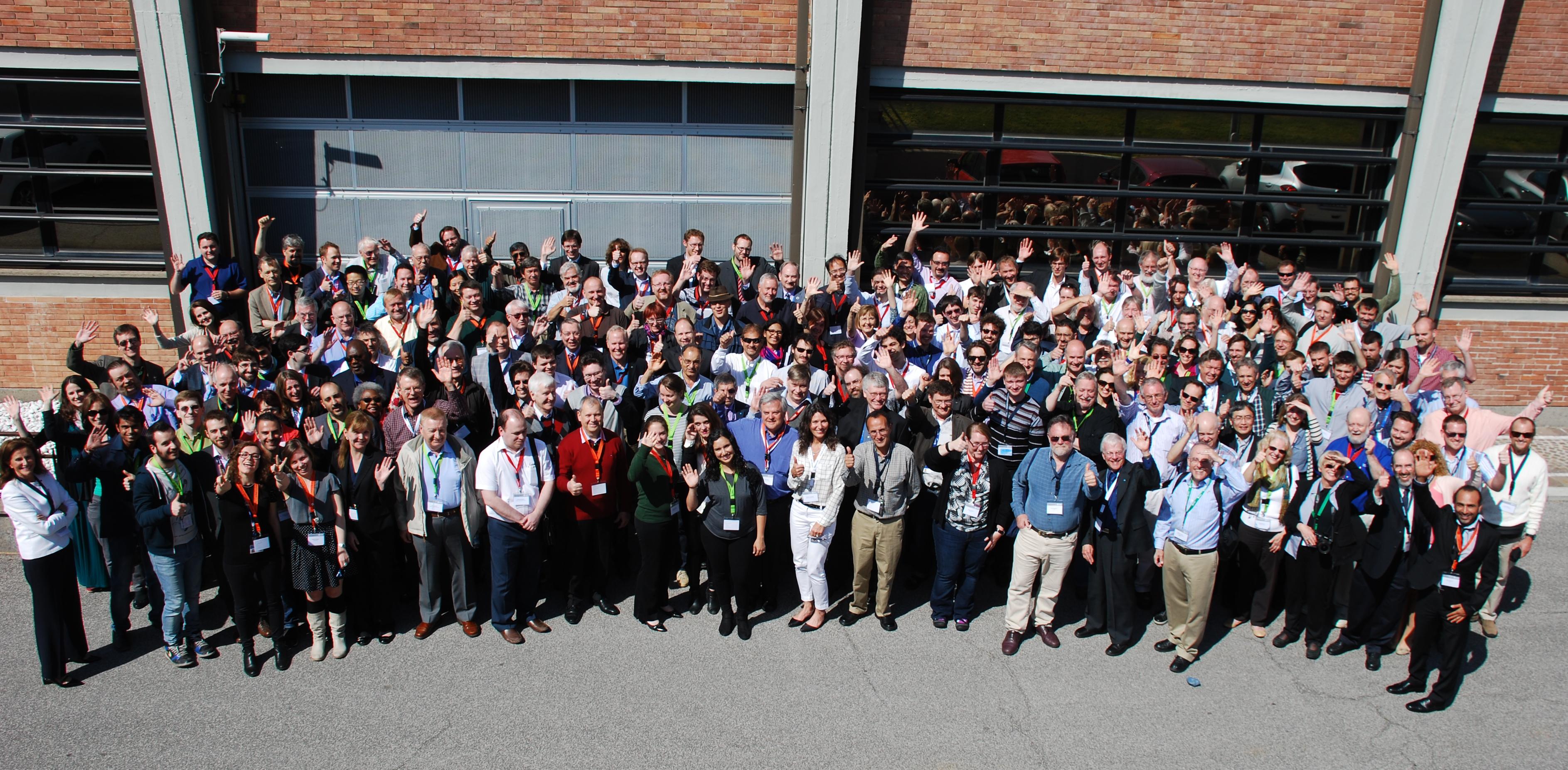
Participants in the 2015 IAA Planetary Defense Conference, ESA/ESRIN, 13-17 April 2015
(Image credit: ESA CC BY-SA IGO 3.0)
| Conference report is available.
2015 Conference abstracts, papers, posters and presentations are available below (see Program). Group picture in high resolution is available at: Live video coverage of the conference was available. PDC 2015 video replays available at: IAA Press Release on Hypothetical Asteroid Impact Exercise Posed For IAA Planetary Defense Conference. |
The International Academy of Astronautics held its 4th conference from 13 to 17 April, 2015 in Frascati, Italy.
The conference included an exercise where participants simulated the decision-making process for developing deflection and civil defense responses to a hypothetical asteroid threat. Threat Information: |
Program
2015 Conference abstracts, papers, posters and presentations are available below.
The Conference Program is also available in pdf format.
| Monday 13 April 2015 | |||
| WELCOMING REMARKS | G. Drolshagen | ||
| N. Bobrinsky | |||
| W. Ailor | |||
| C. Maccone | |||
| R. Tremayne-Smith | |||
| IAA-PDC-15-00-01 | KEYNOTE: 15.02.2013 Chelyabinsk. Are we ready for a recurrence? | O. Atkov | |
| SESSION 1: INTERNATIONAL PROGRAMS & ACTIVITIES | |||
| Session Chairs: Detlef Koschny, Lindley Johnson | |||
| IAA-PDC-15-01-01 | (abst.) | The Near-Earth Object Segment Of ESA’s SSA Programme | G. Drolshagen |
| IAA-PDC-15-01-02 | (abst.) | Astronomical Aspects Of Building A System For Detecting And Monitoring Hazardous Space Objects | B. Shustov |
| IAA-PDC-15-01-03 | (abst.) (pres.) | The Achievements Of The NEOShield Project And The Promise Of NEOShield-2 | A. Harris (DLR) |
| IAA-PDC-15-01-04 | (abst.) | Recent Enhancements To The NEO Observations Program: Implications For Planetary Defense | L. Johnson |
| IAA-PDC-15-01-05 | (abst.) | Asia-Pacific Asteroid Observation Network | M. Yoshikawa |
| INJECT 1: HYPOTHETICAL THREAT | |||
| SESSION 2: DISCOVERY, TRACKING, CHARACTERIZATION | |||
| Session Chairs: Alan Harris (US), Alan Harris (DLR), Line Drube | |||
| IAA-PDC-15-02-01 | (abst.) | PAN-STARRS Search For Near Earth Objects | R. Wainscoat |
| IAA-PDC-15-02-02 | (abst.) | Design Characteristics Of An Optimized Ground Based NEO Survey Telescope | S. Larson |
| IAA-PDC-15-02-03 | (abst.) | ATLAS – Warning For Impending Impact | J. Tonry |
| IAA-PDC-15-02-04 | (abst.) | Sentinel Mission For Planetary Defense | H. Reitsema |
| IAA-PDC-15-02-05 | (abst.) | Building On The NEOWISE Legacy With NEOCAM, The Near-Earth Object Camera | A. Mainzer |
| IAA-PDC-15-02-06 | (abst.) | An Assessment of Current and Proposed Alternatives for Detecting Small Near Earth Objects (NEO) | B. Lal |
| Poster Papers | |||
| IAA-PDC-15-P-01 | (abst.) (pap.) | Simulating Current And Future Optical Ground Based NEO Surveys | T. Grav |
| IAA-PDC-15-P-02 | (abst.) | The Need For Speed In Near Earth Asteroid Characterization | J. Galache |
| IAA-PDC-15-P-03 | (abst.) | Discovery Of Near-Earth Objects At Venus | T. Widemann |
| IAA-PDC-15-P-04 | (abst.) (pap.) (pres.) | Strategies For Secure And Recovery Near-Earth Objects | M. Birlan |
| IAA-PDC-15-P-05 | (abst.) | GAIA Observations Of Asteroid And Potential For NEA Discovery And Characterization | P. Tanga |
| IAA-PDC-15-02-07 | (abst.) | NEOSTEL Fly Eye sensors for the NEO Discovery | L. Cibin |
| IAA-PDC-15-02-08 | (abst.) | NEO Follow-Up, Recovery And Precovery Campaigns At The ESA NEO Coordination Centre | M. Micheli |
| IAA-PDC-15-02-09 | (abst.) | The First Year Of The NEOWISE Restarted Mission | J. Bauer |
| IAA-PDC-15-02-10 | (abst.) | Asteroids Coupled Dynamics Analysis By Means Of Accurate Mass Distribution And Perturbations Modeling | F. Ferrari |
| IAA-PDC-15-02-11 | (abst.) | The Linear Method For Impact Probability Estimation Using A Curvilinear Coordinate System | D. Vavilov |
| Poster Papers | |||
| IAA-PDC-15-P-06 | (abst.) | New Results Of NEO-Surface: Near-Earth Objects Survey Of Asteroids Close To The Earth | S. Ieva |
| IAA-PDC-15-P-07 | (abst.) | Non-Gravitational Perturbations in NEODyS – The Case Of Asteroid (410777) 2009 FD | F. Spoto |
| IAA-PDC-15-P-08 | (abst.) | Apophis: Complex Rotation And Hazard Assessment | D. Farnocchia |
| IAA-PDC-15-P-09 | (abst.) (pres.) | CoLiTec-Multifunction Software For The CCD Image Processing | S. Khlamov |
| IAA-PDC-15-P-10 | (abst.) | PoDET: A Hub For Dedicated Orbits And Ephemerides Computations And General Predictions | D. Hestroffer |
| PANEL SESSION: RESPONSE TO HYPOTHETICAL THREAT | |||
| ADJOURN DAY 1 | |||
| WELCOME RECEPTION | |||
| Tuesday 14 April 2015 | |||
| INTRODUCTORY REMARKS | |||
| SESSION 2: DISCOVERY, TRACKING, CHARACTERIZATION (Continued) | |||
| Session Chairs: Line Drube, Alan Harris (US), Alan Harris (DLR) | |||
| IAA-PDC-15-02-12 | (abst.) | Thermal And Spin Properties Of Near-Earth Objects: Constraints From Next-Generation Infrared Surveys | T. Statler |
| IAA-PDC-15-02-13 | (abst.) | The Population Of Small NEAs | A. Harris (US) |
| IAA-PDC-15-02-14 | (abst.) | An Automated System For Short-Term Impact Warning | S. Chesley |
| IAA-PDC-15-02-15 | (abst.) | Target-Of-Opportunity Characterization Of Sub-200 Meter Near-Earth Asteroids | W. Ryan |
| IAA-PDC-15-02-16 | (abst.) | Physical Characterization Of Chelyabinsk-Sized (~20 Meter) Near-Earth Asteroids: Implications For Impact Hazard, Meteorite Source Bodies, And Human Exploration | V. Reddy |
| IAA-PDC-15-02-17 | (abst.) | New NEODYS Graphic Tool For Orbit Visualization | F. Bernardi |
| IAA-PDC-15-02-18 | (abst.) | High-Resolution Radar Imaging Of Potentially Hazardous Near-Earth Asteroids | M. Busch |
| IAA-PDC-15-02-19 | (abst.) | Constraining Physical Properties Using Meteor Observations | R. Weryk |
| IAA-PDC-15-02-20 | (abst.) | Characterizing The Near-Earth Asteroid Population In The Framework Of The NEOShield Project | D. Perna |
| Poster Papers | |||
| IAA-PDC-15-P-11 | (abst.) | NEOSHIELD-2 EU Project: Physical And Compositional Characterization Of Small NEAs | M. Barucci |
| IAA-PDC-15-P-12 | (abst.) (pap.) (pres.) | Planetary Defense: A Meteorite Perspective | D. Sears |
| IAA-PDC-15-P-13 | (abst.) | Optimal Strategies For Characterizing Potentially Dangerous Asteroids Below the Traditional Size Limit | M. Elvis |
| IAA-PDC-15-P-14 | (abst.) | The Detection Rate And Size-Frequency Distribution Of H>18 NEOs And ARM Targets By Pan-Starrs1 And Pan-Starrs2 Surveys | E. Lilly (Schunova) |
| IAA-PDC-15-P-15 | (abst.) | Results of the Asteroid Tracker Algorithm Challenge | R. Sergeev |
| INJECT 2: HYPOTHETICAL THREAT | |||
| SESSION 3: DEFLECTION AND DISRUPTION TECHNIQUES | |||
| Session Chairs: Brent Barbee, Bong Wie, Paul Miller | |||
| IAA-PDC-15-03-01 | (abst.) | Asteroid Characterization Priorities For Planetary Defense | P. Miller |
| IAA-PDC-15-03-02 | (abst.) (pres.) | Characterizing The Effect Of Asteroid Topography On Hazardous Asteroid Kinetic Impact Deflection Scenarios | D. Scheeres |
| IAA-PDC-15-03-03 | (abst.) | Influence Of Porosity On Impulsive Asteroid Mitigation Scenarios | E. Herbold |
| IAA-PDC-15-03-04 | (abst.) | Stand-Off Nuclear Deflection: The Importance Of Shape, Composition And Spectrum | K. Howley |
| IAA-PDC-15-03-05 | (abst.) | When An Impactor Is Not Enough: The Realistic Nuclear Option For Standoff Deflection | D. Dearborn |
| IAA-PDC-15-03-06 | (abst.) | Optimizing Surface Ablation Deflection In The Presence Of Realistic Asteroid Topography And Rotation | J. McMahon |
| IAA-PDC-15-03-07 | (abst.) (pres.) | Directed Energy Planetary Defense Mission | P. Lubin |
| IAA-PDC-15-03-08 | (abst.) | A Comparison Of Kinetic Impactor And Nuclear Deflection For Two Scenarios: Bennu And The 2015 PDC Scenario | J. Owen |
| IAA-PDC-15-03-09 | (abst.) | Suborbital Asteroid Intercept And Fragmentation For Very Short Warning Time Scenarios | R. Hupp |
| IAA-PDC-15-03-10 | (abst.) | A New Terminal Guidance Sensor System For Asteroid Intercept Or Rendezvous Missions | J. Lyzhoft |
| IAA-PDC-15-03-11 | (abst.) | QBOLT – Directed Energy System Concepts For Asteroid Threat Mitigation | M. Thangavelu |
| PANEL SESSION: RESPONSE TO HYPOTHETICAL THREAT | |||
| ADJOURN DAY 2 | |||
| POSTER REVIEW | |||
| Wednesday 15 April 2015 | |||
| INTRODUCTORY REMARKS | |||
| SESSION 3: CONTINUED | |||
| IAA-PDC-15-03-12 | (abst.) | ASTEROID DEFENCE: COMPARISON OF Kinetic-Impact And Nuclear Stand-Off Schemes | G. Gisler |
| IAA-PDC-15-03-13 | (abst.) | Disruption Limits Of Kinetic-Impactor Mitigation | M. Bruck Syal |
| IAA-PDC-15-03-14 | (abst.) | Los Alamos RAGE Simulations Of The HAIV Mission Concept | R. Weaver |
| IAA-PDC-15-03-15 | (abst.) | GPU-Accelerated Computational Tool Development For Studying The Effectiveness Of Nuclear Subsurface Explosions | B. Zimmerman |
| SESSION 4: MISSION AND CAMPAIGN DESIGN AND EXECUTION | |||
| Session Chairs: Ian Carnelli, Patrick Michel, Marco Tantardini | |||
| IAA-PDC-15-04-01 | (abst.) | Asteroid Impact & Deflection Assessment Mission: Science Return And Mitigation Relevance | P. Michel |
| IAA-PDC-15-04-02 | (abst.) | Asteroid Impact & Deflection Assessment: DART | A. Cheng |
| IAA-PDC-15-04-03 | (abst.) | Asteroid Impact Mission: A Unique Opportunity To Demonstrate Planetary Defense While Testing Technologies For Future Missions And Performing Asteroid Scientific Investigations | I. Carnelli |
| IAA-PDC-15-04-04 | (abst.) | Aida Double Asteroid Redirection Test (Dart) Mission: Modeling Expected Outcomes | A. Stickle/O. Barnouin |
| IAA-PDC-15-04-05 | (abst.) | NEOShield: The Fate Of Ejecta From A Kinetic Impactor Strike On A Near-Earth Object | S. Schwartz |
| IAA-PDC-15-04-06 | (abst.) | A Direct Observation The Asteroid’s Structure From Deep Interior To Regolith: Why And How Do It? | A. Herique |
| IAA-PDC-15-04-07 | (abst.) | Using Mission Images To Study Evidence Of Block Motion On Asteroids: Implications For Seismology Of Small Bodies | J. Noviello |
| IAA-PDC-15-04-08 | (abst.) (post.) | Relevance of PHILAE And MASCOT In-Situ Investigations for Planetary Defense | S. Ulamec |
| INJECT 3: HYPOTHETICAL THREAT | |||
| SESSION 4: CONTINUED | |||
| Poster Papers | |||
| IAA-PDC-15-P-16 | (abst.) (pap.) | Asteroid Impact Monitoring Mission: Mission Analysis And Innovative Strategies For Close Proximity Maneuvering | F. Ferrari |
| IAA-PDC-15-P-17 | (abst.) | Fast Spinning Primaries Of NEA Binaries: The Case Of Didymos, AIDA Mission’s Target | A. Campo Bagatin |
| IAA-PDC-15-P-18 | (abst.) | Asteroid Surface Gravimetry For Characterizing Asteroid Mass And Internal Structure | K. Carroll |
| IAA-PDC-15-P-19 | (abst.) (pap.) | Solar-Sailing Trajectory Design For Close-Up NEA Observations Mission | A. Peloni |
| IAA-PDC-15-P-20 | (abst.) (pap.) (pres.) | Large Lightweight Deployable Structures For Planetary Defense: Solar Sail Propulsion, Solar Concentrator Payloads, Large-Scale Photovoltaic Power | P. Seefledt |
| IAA-PDC-15-04-09 | (abst.) | Investigations Of Short Warning Time Response Options For Hazardous Near-Earth Objects | B. Seery |
| IAA-PDC-15-04-10 | (abst.) | An Innovative Solution To NASA’s NEO Impact Threat Mitigation Grand Challenge And Flight Validation Mission Architecture Development | B. Wie |
| IAA-PDC-15-04-11 | (abst.) (pres.) | Enhanced Gravity Tractor Technique For Planetary Defense | D. Mazanek |
| IAA-PDC-15-04-12 | (abst.) | Mission Design For A Gravity Tractor Demonstration Mission | N. Faber |
| IAA-PDC-15-04-13 | (abst.) | Metrics For Evaluating Effective Disruption Of Hazardous Near-Earth Objects | B. Kaplinger |
| IAA-PDC-15-04-14 | (abst.) | NEOShield: Post Mitigation Impact Risk Assessment For Asteroid Deflection Demonstration Missions | S. Eggl |
| IAA-PDC-15-04-15 | (abst.) | Vision-Based Navigation System For Cost-Efficient Mitigation Missions | J. Gill |
| IAA-PDC-15-04-16 | (abst.) | NEO Threat Mitigation Software Tools Within the NEOShield Project and Application to 2015 PDC | J.L. Cano |
| IAA-PDC-15-04-17 | (abst.) | From Sail To Soil – Getting Sailcraft Out Of The Harbor On A Visit To One Of Earth’s Nearest Neighbors | T. Grundmann |
| IAA-PDC-15-04-18 | (abst.) | Mission Analysis For The Ion Beam Deflection Of Fictitious Asteroid 2015 PDC | C. Bombardelli |
| IAA-PDC-15-04-19 | Impact Risk Assessment And Planetary Defense Mission Planning For Asteroid 2015 PDC | G. Vardaxis | |
| PANEL SESSION: RESPONSE TO HYPOTHETICAL THREAT | |||
| ADJOURN DAY 3 | |||
| PUBLIC EVENT | |||
| Thursday 16 April 2015 | |||
| INTRODUCTORY REMARKS | |||
| SESSION 4: CONTINUED | |||
| IAA-PDC-15-04-20 | (abst.) | Robotic Missions To Small Bodies And Their Potential Contributions To Human Exploration And Planetary Defense | P. Abell |
| IAA-PDC-15-04-21 | (abst.) (pres.) | NASA’s Asteroid Redirect Mission Leverages Enhanced PHA Detection And Demonstrates Potential Mitigation Options | M. Gates |
| IAA-PDC-15-04-22 | (abst.) | The Mission Accessibility of Near-Earth Asteroids | B. Barbee |
| IAA-PDC-15-04-23 | (abst.) | BILLIARDS: A Demonstration Mission for Hundred-Meter Class Near Earth Asteroid Disruption | M. Marcus |
| IAA-PDC-15-04-26 | (abst.) | A KINETIC‐IMPACTOR DEMONSTRATION MISSION TO CHANGE THE SPIN OF AN ASTEROID | L. Drube |
| IAA-PDC-15-04-25 | (abst.) | NEOShield Kinetic Impactor Demonstration Mission | K. Engel, Albert Falke |
| SESSION 5: CONSEQUENCES OF IMPACTS | |||
| Session Chairs: Mark Boslough, Barbara Jennings, Alan Harris (US) | |||
| IAA-PDC-15-05-01 | (abst.) | New Risk Assessment And Early Warning Of Airbursts From Small NEOs | M. Boslough |
| IAA-PDC-15-05-02 | (abst.) | Break-Up Modeling And Trajectory Simulation Under Uncertainty For Asteroids | P. Mehta |
| IAA-PDC-15-05-03 | (abst.) | Analysis Of The Airburst Phenomenon From An Aerothermodynamic Point Of View: The Case Of Chelyabinsk | N. Minster |
| IAA-PDC-15-05-04 | (abst.) | Sensitivity Of Ground Damage Predictions To Meteoroid Breakup Modeling Assumptions | D. Mathias |
| IAA-PDC-15-05-05 | (abst.) | Wave Generation, Wave Propagation, And Onshore Consequences Of The 2015 PDC Asteroid-Impact Scenario | S. Ezzedine |
| IAA-PDC-15-05-06 | (abst.) | Consequences Of The Impact Of A 300-M-Diameter Asteroid | V. Svetsov |
| INJECT 4: HYPOTHETICAL THREAT | |||
| LUNCH | |||
| SESSION 6: DISASTER & MITIGATION PLANNING & PUBLIC EDUCATION | |||
| Session Chairs: Nahum Melamed, Dave Baiocchi, L.A. Lewis, Victoria Friedensen | |||
| IAA-PDC-15-06-01 | (abst.) (pres.) | NEOShield Public Outreach / New Media activities | R. Hermsen |
| IAA-PDC-15-06-02 | (abst.) | Understanding Risk Perceptions and Public Information Needs from the Bottom-Up: Important Elements for Managing Responses to Hazardous NEO’s | M. Race |
| IAA-PDC-15-06-03 | (abst.) (pres.) | Means of Education about The Impact Hazard – Evaluation and Suggestions Talking ‘Planetary Defense’ in Schools, Media and Museums | M. Muller |
| IAA-PDC-15-06-04 | (abst.) (pres.) | When The Sky Falls: Performing Initial Assessments Of Bright Atmospheric Events | W. Cooke |
| IAA-PDC-15-06-06 | (abst.) (post.) (pres.) | Is A Special Legal Regime For Planetary Defence Measures Necessary? | H. Mayer |
| IAA-PDC-15-06-07 | (abst.) (pres.) | A Probabilistic Framework for Asteroid Risk Assessment | J. Reinhardt |
| IAA-PDC-15-06-08 | (abst.) | A Simulated Asteroid Impact Over The Swiss-German Border | D. Koschny |
| IAA-PDC-15-06-09 | (abst.) | Covering for impact: Russian media’s reporting on planetary defense matters before and after the Chelyabinsk meteor | O. Dobrovidova |
| IAA-PDC-15-06-10 | (abst.) | Communicating About Asteroid Impact Hazards: Lessons Learned, Challenges To Meet | L. Billings |
| Poster Papers | |||
| IAA-PDC-15-P-21 | (abst.) | NASA’S Meteoroid Environments Office’s Response to bright bolide events over continental USA | R. Blaauw |
| IAA-PDC-15-P-22 | (abst.) (pap.) | The 2013 SGAC Name-An-Asteroid Campaign – Overview, Results, Lessons Learned – A Strategy for IAWN to Educate the General Public | A. Karl |
| IAA-PDC-15-P-23 | (abst.) | International NEO Education And Public Outreach | J. Burke |
| IAA-PDC-15-P-24 | (abst.) | The International Space University Space Studies | M. Thangavelu |
| IAA-PDC-15-P-25 | (abst.) | Not Just “Rocks From Space”: Communicating The Conceptual Foundations Of The Neo Hazard To Non-Science Professionals Through Short Videos | T. Statler |
| PANEL SESSION: RESPONSE TO HYPOTHETICAL THREAT | |||
| ADJOURN DAY 4 | |||
| CONFERENCE BANQUET | |||
| Friday 16 April 2015 | |||
| INTRODUCTORY REMARKS | |||
| SESSION 7: THREAT RESPONSE EXERCISE | |||
| Session Chair: Debbie Lewis, Victoria Friedensen | |||
| INJECT 5: HYPOTHETICAL THREAT | |||
| BREAK | |||
| INJECT 6: HYPOTHETICAL THREAT | |||
| LUNCH | |||
| INJECT 7: HYPOTHETICAL THREAT | |||
| DISCUSSION: LESSONS LEARNED AND RECOMMENDATIONS | |||
| CONFERENCE ENDS | |||
| POSTERS | |||
| IAA-PDC-15-P-26 | (abst.) (pap.) | Overview Of A New NASA Project Focused On Planetary Defense | J. Arnold |
| IAA-PDC-15-P-27 | (abst.) (pap.) | About Development Of Base Components Of The International Planetary Defence System “CITADEL” | A. Zaitsev |
| IAA-PDC-15-P-28 | (abst.) | NEAR REAL TIME BOLIDE IMPACT ASSESSMENT | E. Tagliaferri |
| IAA-PDC-15-P-29 | (abst.) | EDEN SHIELD: Strategies and Concepts for Planetary Defense | M. Thangavelu |
| IAA-PDC-15-P-30 | (abst.) | Status of NEO confirmation observations at the Thüringer Landessternwarte (033) | B. Stecklum |
| IAA-PDC-15-P-31 | (abst.) | HIGH-FIDELITY SIMULATION OF GROUND-BASED OPTICAL NEO SURVEYS | E. Christensen |
| IAA-PDC-15-P-32 | (abst.) (pap.) | ON THE KEYHOLE POSITIONS OF APOPHIS | L. Sokolov |
| IAA-PDC-15-P-33 | (abst.) (pap.) | Observing NEOs from French Polynesia | JP. Barriot |
| IAA-PDC-15-P-34 | (abst.) | KLENOT NEO FOLLOW-UP PROGRAM IN EUROPEAN FRAMEWORK | J. Ticha |
| IAA-PDC-15-P-35 | (abst.) | CURRENT STATE AND FUTURE PROSPECTS FOR ISON ASTEROID PROGRAM | L. Elenin |
| IAA-PDC-15-P-36 | (abst.) | GAIA FOLLOW-UP OF SOLAR SYSTEM OBJECTS | W. Thuillot |
| IAA-PDC-15-P-37 | (abst.) | Dynamical evolution of asteroid 1999 RQ (Bennu). Close approaches to the Earth | A. Abedin |
| IAA-PDC-15-P-38 | (abst.) (pap.) | THE SHOEMAKER NEO GRANT PROGRAM: MAKING A DIFFERENCE | B. Betts |
| IAA-PDC-15-P-39 | (abst.) | ACCURATE ORBIT PROPAGATION OF PLANET-ENCOUNTERING BODIES | G. Bau |
| IAA-PDC-15-P-40 | (abst.) | UNSTABLE GIANT COMETS IN THE OUTER SOLAR SYSTEM AS A FUTURE CONCERN FOR PLANETARY DEFENCE | D. Steel |
| IAA-PDC-15-P-41 | (abst.) | THE NEO SYSTEM OF THE ESA SPACE SITUATIONAL AWARENESS PROGRAMME | E. Perozzi |
| IAA-PDC-15-P-42 | (pap.) (abst.) | Detection Performance of L1-based NEO Surveys | P. Maier |
| IAA-PDC-15-P-43 | (abst.) | Near Earth Object Detection by Continues Sky Imaging for Observing Occultation from different visual Points | A. Patil |
| IAA-PDC-15-P-44 | (abst.) | A WIDE FIELD SURVEY OF NEAR-EARTH OBJECTS | V.V. Emel’yanenko |
| IAA-PDC-15-P-45 | (abst.) | Visible spectra of near-Earth asteroids obtained with Isaac Newton Telescope: setting up the framework and first results | M. Popescu |
| IAA-PDC-15-P-46 | (pap.) (abst.) | Results of the Asteroid Data Hunter algorithm challenge | A. Beasley |
| IAA-PDC-15-P-47 | (abst.) | A SPACE TELESCOPE FOR MASS DETECTION OF DECAMETER BODIES IN THE NEAR SPACE | A.S. Shugarov |
| IAA-PDC-15-P-48 | (abst.) | Prediction of impactors: method based on an Exhaustive Search of Orbital Planes | Y. Medvedev |
| IAA-PDC-15-P-49 | (abst.) | Radar Astrometry and Physical Characterization | M. Nolan |
| IAA-PDC-15-P-50 | (abst.) | POTENTIALLY HAZARDOUS ASTEROIDS DETECTION FROM SPACE-BASED NETWORK ON DISTANT RETROGRADE ORBITS | C. Colombo |
| IAA-PDC-15-P-51 | (abst.) | Momentum transfer via direct impact: Experimental measurements | K. Housen |
| IAA-PDC-15-P-52 | (abst.) (pap.) | Directed Energy Deflection Laboratory Measurements | T. Brashears |
| IAA-PDC-15-P-53 | (abst.) (pap.) | 1D to 3D MAPPING FOR NUCLEAR ENERGY DEPOSITION | R. Managan |
| IAA-PDC-15-P-54 | (abst.) | PHYSICS OF NUCLEAR ENERGY DEPOSITION FOR THE DEFLECTION OF ASTEROID AND COMETS | K. Howley |
| IAA-PDC-15-P-55 | (abst.) (pap.) | INTERNAL GRAVITY, SELF-ENERGY, AND DISRUPTION OF ASTEROIDS | A. Dobrovolskis |
| IAA-PDC-15-P-56 | (abst.) (pres.) | DESIGN OF THE FLIGHT SCHEME AND S/C NAVIGATION SUPPORT ENSURING THE GOALS OF THE BLAST DEFLECTION DEMONSTRATION MISSION TO THE POTENTIALLY HAZARDOUS ASTEROID 2001 JV1 | Yu Kolyuka |
| IAA-PDC-15-P-57 | (abst.) | EFFECTS OF IMPACT DEFLECTION ON HAZARDOUS ASTEROIDS: THE ROLE OF ASTEROID INTERIOR STRUCTURE | Zhang Yun |
| IAA-PDC-15-P-58 | (abst.) | A FAST RESPONSE NEO IMPACT AND FLYBY MISSION CONCEPT DEMONSTRATOR | B. Rishikof |
| IAA-PDC-15-P-59 | (abst.) | ASTEROID’S ORBIT AND ROTATIONAL CONTROL USING LASER ABLATION: ADVANCES IN PHYSICAL AND SIMULATION MODELLING | M. Vetrisano |
| IAA-PDC-15-P-60 | (abst.) | IMPROVED EQUATIONS OF STATE AND STRENGTH MODELS FOR ASTEROID IMPACT AND DEFLECTION | D. Swift |
| IAA-PDC-15-P-61 | (abst.) | Differences in Nuclear Deflection Scenarios with Oddly Shaped Asteroids | J. Wasem |
| IAA-PDC-15-P-62 | (abst.) | MATERIAL MODELS OF SMALL SOLAR SYSTEM BODIES FOR USE IN IMPACT HAZARD MITIGATION MODELING | C. Plesko |
| IAA-PDC-15-P-63 | (abst.) | SIMPLE GRAVITATIONAL MODELS AND CONTROL LAWS FOR AUTONOMOUS OPERATIONS IN PROXIMITY OF UNIFORMLY ROTATING ASTEROIDS | A. Turconi |
| IAA-PDC-15-P-64 | (abst.) | Mobile Asteroid Surface Scout (MASCOT) – Design, Development and Delivery of a Small Asteroid Lander aboard HAYABUSA-2 | JT. Grudmann |
| IAA-PDC-15-P-65 | (abst.) (pap.) | Technology and knowledge reuse concepts to enable responsive NEO characterization missions based on the MASCOT lander | C. Lange |
| IAA-PDC-15-P-66 | (abst.) (pap.) | On Time, On Target – How the Small Asteroid Lander MASCOT Caught a Ride Aboard HAYABUSA-2 in 3 Years, 1 Week and 48 Hours | C. Grimm |
| IAA-PDC-15-P-67 | (abst.) (pap.) | KINETIC DEFLECTION UNCERTAINTIES FOR REAL ASTEROID SHAPES | J. Feldhacker |
| IAA-PDC-15-P-68 | (abst.) | Momentum transfer measurement of laboratory hypervelocity impact experiments on asteroid-like materials as a function of target porosity and projectile shape | J. Hupfer |
| IAA-PDC-15-P-69 | (abst.) (pap.) | CASTALIA PROPOSAL: EXPLOITING A SCIENCE MISSION FOR ASTEROID DEFLECTION | A. Gibbings |
| IAA-PDC-15-P-70 | (abst.) (pap.) | INSIGHTS FOR NEO DEFLECTION | N. Melamed |
| IAA-PDC-15-P-71 | (abst.) (pap.) | Recent Improvement in the Theoretical Modelling of a Laser-Based Deflector for Asteroids | N. Thiry |
| IAA-PDC-15-P-72 | (abst.) | LASER RETROREFLECTORS AS NEO POSITIONING AND GEODETIC TARGETS | S. Dell’Agnello |
| IAA-PDC-15-P-73 | (abst.) | DEFLECTION OF ASTEROIDS AND COMETS CONSIDERED AS AN AGGLOMERATED BODY | G. Tancredi |
| IAA-PDC-15-P-74 | (abst.) | Asteroid Deflection by Broadside Impact | J.L. Watson |
| IAA-PDC-15-P-75 | (abst.) | Apophis Explorer, Taking The Opportunity of its 2029 Flyby for a Characterization Mission | JY. Prado |
| IAA-PDC-15-P-76 | (abst.) | Feasibilities OF SPACE-rocket complexes for CREATION OF NEAR ECHELON OF THE EARTH PROTECTION SYSTEM | VG. Degtiar |
| IAA-PDC-15-P-77 | (abst.) | Project SEUSS: Save Earth Using Solar System Assets | M. Thangavelu |
| IAA-PDC-15-P-78 | (abst.) (pap.) | Performance Assessment of the Nuclear Cycler Concept | N. Thiry |
| IAA-PDC-15-P-79 | NEAR EARTH ASTEROIDS ANALYSIS AS THE OBJECTS FOR MOTION CONTROL USING GRAVITY ASSIST MANEUVERS | A. Ledkov | |
| IAA-PDC-15-P-80 | (abst.) | CURRENT ACTIVITIES OF YUZHNOYE STATE DESIGN OFFICE ON PLANETARY DEFENSE | M. Kaliapin |
| IAA-PDC-15-P-81 | (abst.) | Demo-mission for deflection of the asteroid 2001 JV1. Conceptions | T. Afanasieva |
| IAA-PDC-15-P-83 | (abst.) (pap.) | NEOSHIELD: FINDING SAFE HARBORS IN ASTEROID DEFLECTION MISSIONS | S. Eggl |
| IAA-PDC-15-P-84 | (abst.) (pap.) | GLOBAL IMPACT DISTRIBUTION OF ASTEROIDS | C. Rumpf |
| IAA-PDC-15-P-85 | (abst.) (pap.) | Physics Based Modeling of Meteor Entry and Breakup | D.K. Prabhu |
| IAA-PDC-15-P-86 | (abst.) | MASS EXTINCTIONS AS LOGNORMAL STOCHASTIC PROCESSES | C. Maccone |
| IAA-PDC-15-P-87 | (abst.) | LOCATION AND CONSEQUENCES OF CELESTIAL BODIES COLLISION WITH THE EARTH | Y. Bondarenko |
| IAA-PDC-15-P-88 | CONSEQUENCES’ MODELLING OF AIR, LAND AND UNDERWATER EXPLOSIONS OF DANGEROUS celestial BODIES | A. Aleksandrov | |
| IAA-PDC-15-P-89 | FIREBALL PROPERTIES DEPENDING ON THE PRE-ATMOSPHERIC METEOROID PARAMETERS | M. Gritsevich | |
| IAA-PDC-15-P-90 | (abst.) (pap.) | NEO PUBLIC OUTREACH AND EDUCATION AT KLET OBSERVATORY AND CESKE BUDEJOVICE PLANETARIUM | J. Ticha |
| IAA-PDC-15-P-91 | (abst.) (pap.) | WHAT ABOUT COMETS? | J. Marks |
| IAA-PDC-15-P-92 | (abst.) (pres.) | Communication Planning For The International Asteroid Warning Network | L. Billings |
| IAA-PDC-15-P-93 | (abst.) (pap.) | THE PLANETARY SOCIETY NEO EDUCATION AND COMMUNICATION PROGRAM | B. Betts |
| IAA-PDC-15-P-94 | Planetary Defense and Citizen Participation: A Summary of a Participatory Technology Assessment of NASA’s Asteroid Initiative | V. Friedensen | |
| IAA-PDC-15-P-95 | Recent Activities of the US Federal Emergency Management Agency Concerning Response to Near Earth Object Impacts | L. Lewis | |
| IAA-PDC-15-P-96 | (abst.) | A SOFTWARE INTEGRATED PACKAGE FOR FORECUSTING OF COLLISION CATASTROPHES | Yu Medvedev |
Program Committee
2015 IAA PLANETARY DEFENSE CONFERENCE
ORGANIZING COMMITTEE
William Ailor*, The Aerospace Corporation
AK Anilkumar, Indian Space Research Organization
V Ashok, Indian Space Research Organization
Dave Baiocchi, RAND Corporation
Brent Barbee, NASA Goddard Space Flight Center
Fabrizio Bernardi, SpaceDyS
Bruce Betts, The Planetary Society
Mark B Boslough, Sandia National Laboratories
Juan Cano, Deimos Space
Ian Carnelli, European Space Agency
Clark Chapman, Southwest Research Institute
Jean-Michel Contant, International Academy of Astronautics
Richard Crowther, United Kingdom Space Agency
Fabrice Dennemont, International Academy of Astronautics
Gerhard Drolshagen, European Space Agency
Line Drube, German Space Agency (DLR)
Conor Duggan, Space Generation Advisory Council
Alan Fitzsimmons, Queen’s University, Belfast
Victoria Friedensen, NASA Headquarters
Jesús Gil Fernández, GMV Aerospace
Alan Harris, German Space Agency (DLR)
Alan Harris, Space Science Institute
Dario Izzo, European Space Agency
Barbara Jennings, Sandia National Laboratories
Lindley Johnson, NASA NEO Observation Program Executive
Tom Jones, Association of Space Explorers
Alex Karl, Space Generation Advisory Council
Detlef Koschny, European Space Agency
Debbie Lewis, Creative Resilience Ltd.
Leviticus Lewis, Federal Emergency Management Agency
Nahum Melamed, The Aerospace Corporation
Patrick Michel, Côte d’Azur Observatory
Paul Miller, Lawrence Livermore National Laboratory
David Morrison, NASA Lunar Science Institute
Pedro Gutiérrez, Instituto de Astrofísica de Andalucía – CSIC
Marius-Ioan Piso, Romanian Space Agency
Johannes Schoenmaekers, European Space Agency
Michael P Simpson, Secure World Foundation
Marco Tantardini, ARM Study, Keck Institute for Space Studies
Richard J Tremayne-Smith*,
Giovanni Valsecchi, IAPS, INAF
Karel A. van der Hucht, International Astronomical Union
Frans von der Dunk, University of Nebraska-Lincoln
Bong Wie, Iowa State University
*Conference Co-Chair
Local Organizing Committee
Detlef Koschny, ESA/ESTEC, The Netherlands (Chair)
Gerhard Drolshagen, ESA/ESTEC, The Netherlands (Co‐Chair)
Gerhard Schwehm, ESA/ESTEC, The Netherlands
Germano d’Abramo, SpaceDys and ESA/ESRIN, Italy
Andrea Milani, University of Pisa, Italy
Fabrizio Bernardi, SpaceDys, Italy
Giovanni Valsecchi, INAF/Rome, Italy
Ettore Perozzi, Deimos, Rome, Italy
Carmen Comparetto, Congrex, Italy
Franca Morgia, ESRIN communications office, Italy
Clare Mattok, ESA/HQ, Paris, France
Daniel Scuka, SSA PR officer, ESA/ESOC, Germany
Leaflet
Call for Papers is now closed.
The 2015 PDC will include an impact threat exercise, where participants will simulate the decision-making process for developing deflection and civil defense responses to a threat posed by hypothetical asteroid 2013 PDC15. Information on the evolution of the threat up to the date of the conference will be posted at a website to be announced. Attendees are invited to use 2013 PDC15 as a subject for their own exercises and for papers that might be presented at the conference. Priority slots for presentation of papers focused on aspects of the 2013 PDC15 threat will be available. The final period of the threat’s evolution will be provided in periodic updates during the conference, and participants will develop a set of actionable recommendations based on that information.
In addition to topics related to the 2013 PDC15 threat, papers were solicited in the areas listed below:
Planetary Defense – Recent Progress & Plans
• Current national and international funded activities that support planetary defense
• Program status and plans (e.g., NASA’s NEO program, ESA and EU NEO & SSA program)
• Recently conducted NEO threat simulation and disaster mitigation exercises
NEO Discovery
• Overviews of current ground and space-based discovery statistics
• Current discovery and follow-up capabilities, and advances in utilizing archival data
• Orbital refinements including non-gravitational effects and keyholes
• New surveys expected to be operational within the current decade
NEO Physical Characterization that Informs Mitigation
• Size distribution, albedos, composition, densities, rotation rates, etc.
• Lessons learned from recent observing programs and plans for improvements
• The smaller NEOs (≤ 300 m): assessing the physical properties of the more frequent impactors
Mitigation Techniques & Missions
• Dealing with short warning threats
• Promising technologies for asteroid deflection/disruption
• Flight validation/demonstration missions for planetary defense technologies
• Robotic and human NEO exploration missions that benefit planetary defense
Impact Effects that Inform Warning, Mitigation & Costs
• Information from the geological record and recent history (e.g., Chelyabinsk, Tunguska)
• Consequences of ocean and land impacts
• Economic and other costs of impacts and threat mitigation
Consequence Management & Education
• Policy or legal analysis that will affect or inform future mitigation plans
• Educating the public and the media on NEO detection, impact effects, mitigation missions, impact warnings
• Strategies for developing disaster response plans across international borders
• Lessons learned from regional and international disasters that provide insights for planetary defense
ABSTRACT SUBMITTAL: abstract submission (250 to 500 words in length) is now closed. Abstract submission (by email to iaapdc (at) iaamail.org) in the areas described above or related to planetary defense was open from September 01, 2014 until January 07, 2015 deadline. Please be sure to designate the topic area your paper addresses (see topics listed above). Letters of official acceptance will be mailed on or before January 21, 2015. Abstract submission date has been extended to 7 January 2015. Submission of abstracts is still requested as soon as reasonably possible, to allow initial evaluation to start, but as necessary abstracts will still be accepted through January 7 2015.
PAPERS: The conference will use the “no paper, no podium” rule. Papers are preferred but Extended Abstracts will also be accepted. Papers are due by close of business on April 3, 2015. Revisions and corrections to previously submitted papers will be accepted within two weeks after the end of the conference. The formats for papers are specified on the conference web site. Accepted papers (including poster papers, and briefing charts) will be published on the official conference website.
STUDENT COMPETITION: One or more of the best student paper(s) will be awarded a prize. The aim of the student competition is to help promote academic work and informed political debate by enhancing research and general understanding essential for sound decision making on NEO impact threats in years to come.
VENUE: Frascati is a town in the province of Rome in the Lazio region of central Italy. It is located 20 kilometres (12 mi) south-east of Rome, on the Alban Hills close to the ancient city of Tusculum. Frascati is closely associated with science, being the location of several international scientific laboratories. Frascati is renowned for its white wine, Frascati. It is also an important historical and artistic centre. Earth Observation missions of the European Space Agency are based in ESRIN in Frascati.
CONTACT:
International Academy of Astronautics
6 rue Galilée, BP 1268-16, 75766 Paris Cedex 16
Tel 331 47 23 82 15, Fax 331 47 23 82 16
iaapdc (at) iaamail.org
Paper Submission
Call for papers is now closed. Authors with an accepted abstract will have to use the IAA PDC 2015 paper template or extended abstract template and send it by email to iaapdc (at) iaamail.org before the April 3rd, 2015 deadline. Word format files are preferred but pdf format files will also be accepted.
PAPERS:
The conference will use the “no paper, no podium” rule. Papers are preferred but Extended Abstracts will also be accepted. Papers are due by close of business on April 3, 2015.
Please send by email to iaapdc (at) iaamail.org your paper, extended abstract, presentation, poster before April 3rd deadline in order to be uploaded on the conference memory stick. (please contact iaapdc (at) iaamail.org if your material is too large to be sent by email).
Revisions and corrections to previously submitted papers will be accepted within two weeks after the end of the conference. Accepted papers (including poster papers, and briefing charts) will be published on the official conference website.
TEMPLATES:
POSTERS:
Poster size is:
Height: 140 cm, Width: 80 cm
Portrait orientation
(no onsite printing service, please bring your printed poster to the Conference)
ABSTRACT SUBMITTAL (closed):
Abstract submission (250 to 500 words in length) was open from September 1, 2014 to January 7, 2015.
Please be sure to designate the topic area your paper addresses (see abstract template). Letters of official acceptance will be mailed on or before January 23, 2015. Abstract submission date has been extended to 7 January 2015. Submission of abstracts is still requested as soon as reasonably possible, to allow initial evaluation to start, but as necessary abstracts will still be accepted through January 7, 2015.
Please use the IAA PDC 2015 abstract template and send it by email to iaapdc (at) iaamail.org
Accommodation
HOTEL ACCOMMODATION IN THE FRASCATI AREA
We advise you to book your hotel via the Esrin Travel Office. Please note that the daily transport is guaranteed only for the prebooked hotels.
Should you not require hotel accommodation, you should still confirm your attendance by fax to the Esrin Travel Office so that you will be officially registered for the meeting and be able to gain access to the ESRIN site.
Please use the hotel reservation form
A number of rooms have been pre-booked for the participants at special rates in several local hotels and will be reserved on a first come / first served basis. There will be a courtesy bus that will take you from any of the hotels mentioned in the Hotel Reservation form to ESRIN and back.
HOTEL ACCOMMODATION IN ROME
It is quite easy to reach ESRIN by train from Rome to the Tor Vergata station. For those participants preferring to stay in Rome, below are the addresses of some hotels within walking distance of the Rome Termini railway station. The average cost of a single room with breakfast is € 150 – 200. Please contact them directly to make your reservation.
Hotel Morgana
Via F. Turati, 33/37
00185 Roma
E-mail : hmorgana@tin.it
www.hotelmorgana.com
Tel. 0039 06 4467230
Fax. 0039 06 4469142
Hotel Royal Santina Roma
Via Marsala, 22
00137 Roma
Tel. 0039 06 448751
Fax. 0039 06 4941252
Hotel Mediterraneo
Via Cavour, 15
00184 Roma
Tel. 0039 06 4884051
Fax. 0039 06 4744105
Piazza Barberini area
Hotel 53
Via di San Basilio 53
E-mail : info@lhotel53.com
http://www.lhotel53.com/1024.html
Tel. 0039 06 42014708
Albergo Ottocento
Via dei Cappuccini 19
00187 Roma
Tel +39 06 42011900
Fax +39 06 42011020
E-mail: info@albergottocento.it
http://www.albergottocento.it/
If you decide to book your own hotel accommodation, please do not forget to register for the meeting.
Visa
In order to get an invitation letter from the organizers in Italy, please send a request to the Chair of the Local Organizing Committee with your full mailing address and passport number.
LOC Chair : Detlef Koschny
Contact: Detlef.Koschny(at)esa.int
Welcome to Frascati
Frascati is a town and comune in the province of Rome in the Lazio region of central Italy. It is located 20 kilometres (12 mi) south-east of Rome, on the Alban Hills close to the ancient city of Tusculum. Frascati is closely associated with science, being the location of several international scientific laboratories.
Frascati is a famous and popular town of the “Castelli Romani” (Roman castles) . It is
renowned for its beautiful villas and quality wines. The town originated in the first few centuries of our era around
the ruins of Roman patrician villas. Its healthy climate and closeness to Rome has meant that Frascati has always
been a centre of attraction for both Italian and foreign tourists.
Earth Observation missions of the European Space Agency are based in ESRIN in Frascati.
Climate:
The seasonal average temperature is around 18 – 20 ºC.
How to Get to Frascati
ESRIN is located in Frascati, a small town 20 km south of Rome in Italy.
By taxi
Official taxis located opposite the Arrival Halls are white vehicles and have a taximeter. If taking a taxi from one of Rome’s airports, it is advisable to agree on the fare with the driver in advance. Tell the driver you wish to go to ESRIN, located at Via Galileo Galilei, 00044 Frascati. The ESRIN Centre is in Frascati, near the FIAT Iveco dealer on Via E. Fermi, in the “Area di Ricerca” (Research Area).
You may pre-book your taxi in advance through ESA for arrival pick up at the airport, or train station by downloading and sending the ESA Taxi Request Form by fax to the ESRIN Travel Office.
ESRIN is working with two taxi companies: ‘Piccirilli’ for ESRIN and the Castelli Romani area near Frascati, and ‘Cast’ for Rome. The two taxi companies have slightly different taxi fares however a taxi booked through ESRIN will not exceed the price indicated. From Fiumicino airport to ESRIN, the fare should not exceed €72. From Ciampino airport, it should not exceed €41. Night-time surcharge of 15% is usually requested for a journey commencing between 23:00 and 06:00.
From Rome Leonardo da Vinci Fiumicino airport
Approximate time: 45 min in non-peak hours
Distance: 44 km
Rome Leonardo da Vinci Fiumicino airport is 32 km away from the centre of Rome and is linked to Rome by the Fiumicino motorway and the ring road (GRA). On leaving the airport follow the signs for ROMA. When you arrive at the ring road (GRA) turn right following the signs for Napoli. Continue along the GRA until you come to exit no. 21/22 signposted Via Tuscolana and close to IKEA and take the Via Tuscolana, direction Frascati. Just before Frascati turn left into Via Enrico Fermi at the traffic lights. After approximately one kilometre you will pass the traffic lights at the ENEA complex, keep straight on for 200 metres and then turn right onto Via Galileo Galilei, immediately after the FIAT dealer and before the Tor Vergata train station.
From Ciampino airport
Approximate time: 20 min in non-peak hours
Distance: 17 km
Rome Ciampino airport is located on the Via Appia Nuova, 15 km south from the centre of Rome and is linked to Rome by the ring road (GRA).
On leaving the airport, follow the signs for the GRA, and take the Firenze/Napoli direction. Continue along the GRA until you come to exit no. 21/22 signposted Via Tuscolana and closed to IKEA and take the Via Tuscolana, direction Frascati. Just before Frascati, turn left into Via Enrico Fermi at the traffic lights. After approximately one kilometre you will pass the traffic lights at the ENEA complex, keep straight on for 200 metres and then turn right onto Via Galileo Galilei, immediately after the Fiat dealer and before the Tor Vergata train station.
From Rome City Centre
Approximate time: 40 min in non-peak hours
Distance: 25 km
Exiting Rome from San Giovanni in Laterano square, take the Via Tuscolana in the direction of Frascati. Prior to arriving at the town centre on Via Tuscolana, turn left at the traffic lights along Via Enrico Fermi. After approximately one kilometre you will pass the traffic lights at the ENEA complex, keep straight on for 200 metres and then turn right onto the road that runs between a FIAT dealer and the Tor Vergata train station.
Frascati is served by two different lines of the Italian Railway (Trenitalia). Trains for Frascati and Tor Vergata stations leave at one hour intervals from Rome Termini central station.
Destination: Frascati city centre
The train with final destination “Frascati” arrives directly in the Frascati city centre and is the most practical connection if you go to a hotel in the centre of Frascati.
Destination: Tor Vergata station near ESRIN
The line for “Frosinone”, “Cassino”, “Roccasecca” or “Colleferro” destinations, with stop in Tor Vergata station indicated on the platform display, is ideal if you want to go straight to ESRIN since the station Tor Vergata is only 100 metres from the entrance gate of ESRIN. As the Tor Vergata station is far away from the Frascati city centre, you are not advised to take it if you want to go to your hotel in Frascati.
From Rome Termini central station:
Time: 25 min, Train ticket at Ticket Vending Machine
Take the train from Termini station to “Frosinone”, “Cassino”, “Roccasecca” or “Colleferro” destinations and get off at Tor Vergata, one-way ticket price is around 2€. This stop is approximately 100 metres from ESRIN.
Or
Take the train from Termini station to Frascati destination, one-way ticket price is around 2€. This final station is in the Frascati city centre.
From Fiumicino airport:
Time: 35 min, Train ticket at Ticket Vending Machine
Take the airport Leonardo Express train to Rome Termini station, route time 35 minutes, departing every 30 minutes, one-way ticket price is 11€. From Rome Termini take the train for Tor Vergata, which is 100 metres from ESRIN.
A slightly cheaper option is to take the train from the airport for Fara Sabina, then at Roma Ostiense take the metro B to Roma Termini station. From the Termini take the train for Tor Vergata.
From Ciampino airport:
Take a bus to the Ciampino train station, ticket price is 1€. From Ciampino station, take the train for Tor Vergata.
Registration
| Registration Fee | Early Bird | Normal |
| Non IAA member | € 500 | € 550 |
| IAA member | € 350 | € 400 |
| Student & amateur astronomer | € 125 | € 150 |
| Accompanying Person* | see below | see below |
Registration:
To register, please click on the following link: https://www.etouches.com/ereg/newreg.php?eventid=107074&
Early bird registration until February 07, 2015.
Media registration:
Registration for qualified media is available here: https://www.etouches.com/ereg/newreg.php?eventid=119819&
A tour through Rome in a Fiat 500 is optional (please see below).
* Accompanying Person registration:
The registration of the accompanying person is free of charge.
The accompanying person cannot attend the meeting but is entitled to attend the cocktails arranged at the venue.
The gala dinner has a cost of 55 Euros per each accompanying person.
The Fiat 500 tour of Rome can be booked also for the accompanying person at 140 Euros per person ( min. two people)
Cancellation:
Cancellations must be in writing and received no later than the 20 March 2015 (4 weeks before the conference). There is a 100€ cancellation fee for cancellations after 20 March 2015 and before 10 April 2015. Registrants who cancel after 10 April 2015 or fail to attend the conference will forfeit the entire fee.
Observatory visit:
Sunday (12 April 2015) visit to the Campo Imperatore Observatory. The Observatory of Campo Imperatore is the one at highest elevation among the professional ones in Italy and is the one with the darkest and clearer sky. The Campo Imperatore Astronomical Observatory was born as observational site for the Rome Astronomical Observatory (OAR) well before INAF birth and nowadays is still one of the very few structures of this kind available on the Italian soil. The Campo Imperatore Observatory has a 600 m² area distributed on three floors. Below the Schmidt and AZT domes that measure 50 m² and 65 m² respectively, the main floor hosts the rooms for visitors, the telescopes control room, the integration lab, the office area and four bedrooms.
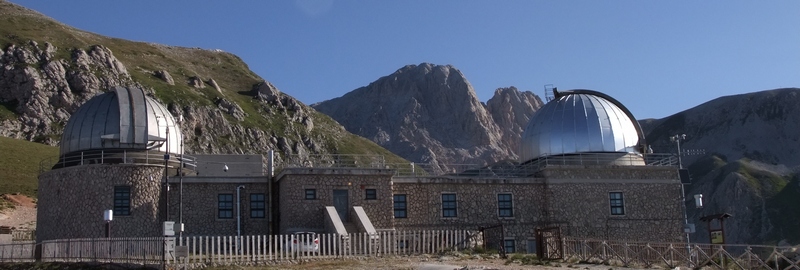
Rome tour:
See Rome through the windows and the open roof of the old Fiat 500! Just like most Romans do!
You will be riding as passenger driven by a professional, following an itinerary that includes the most famous sites of Rome!
You can choose the itinerary and preferred time to ride! Grand Tour, Secrets of Rome, Tour of the Hills, Roman Holiday, Night Tour, Christmas in Rome!
It’s an exciting, fun and very interesting experience! During the ride we’ll stop to take pictures, enjoy views and, of course, have a gelato or cappuccino! You will just love this tour!
The price is 280€ per car (140€ per person). Deadline for this price is 28 February; after this deadline the price may vary.
Please note that 2 people can fit in one car (exceptionally also 3). The tour can be booked individually or in couples. In case of a single booking, please be aware that you might share the car with another participant of the 4th IAA Planetary Defense Conference.
If you are interested in booking this tour please fill out the form the following link and indicate in the “Personal Note” the keyword “ESA”. http://www.neronetoursitaly.com/transportation/vespa-fiat-500-tours-of-rome/rome-by-vespa-and-fiat-500-booking-form
Dates:
Saturday 11 April
9 am – Grand Tour
9 am – Hills of Rome
3 pm – Hills of Rome
8:30 pm – Night Tour
Tuesday14 April
9 am – Hills of Rome
3 pm – Hills of Rome
8:30 pm – Night Tour
Saturday 18 April
9 am – Grand Tour
9 am – Hills of Rome
3 pm – Hills of Rome
8:30 pm – Night Tour
A detailed description of the different tours can be found on the website: http://www.neronetoursitaly.com/transportation/vespa-fiat-500-tours-of-rome/Rome-by-Vespa-and-Fiat-500-itinerary
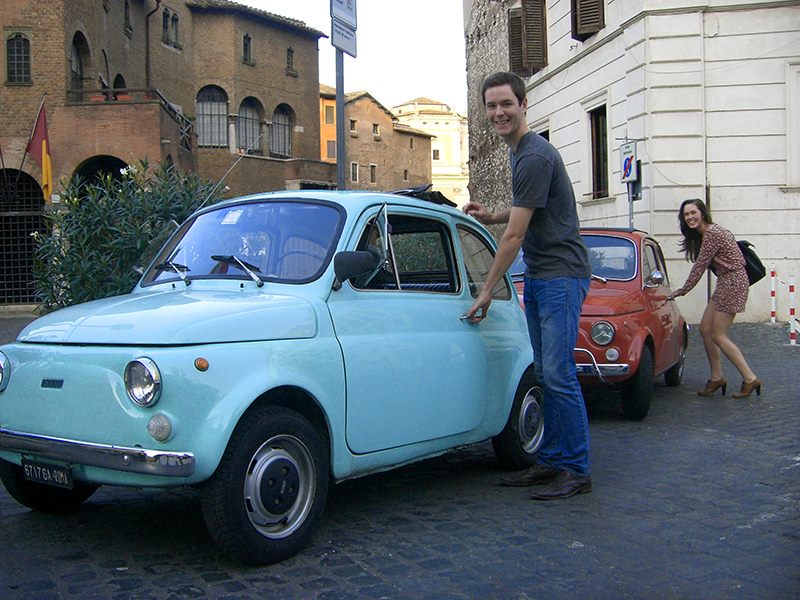

Sponsors
| PRIMARY SPONSORS | |
 |
 |
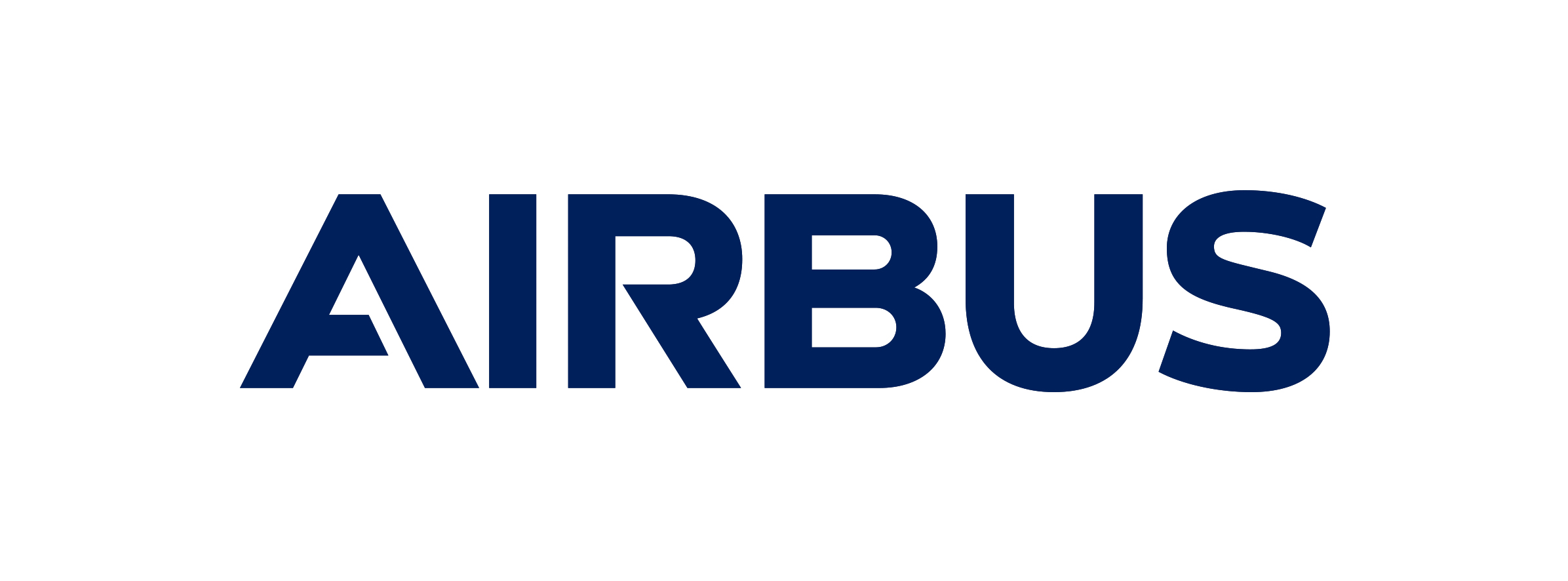 |
 |
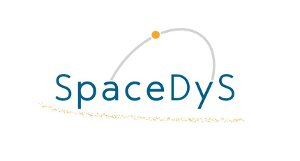 |
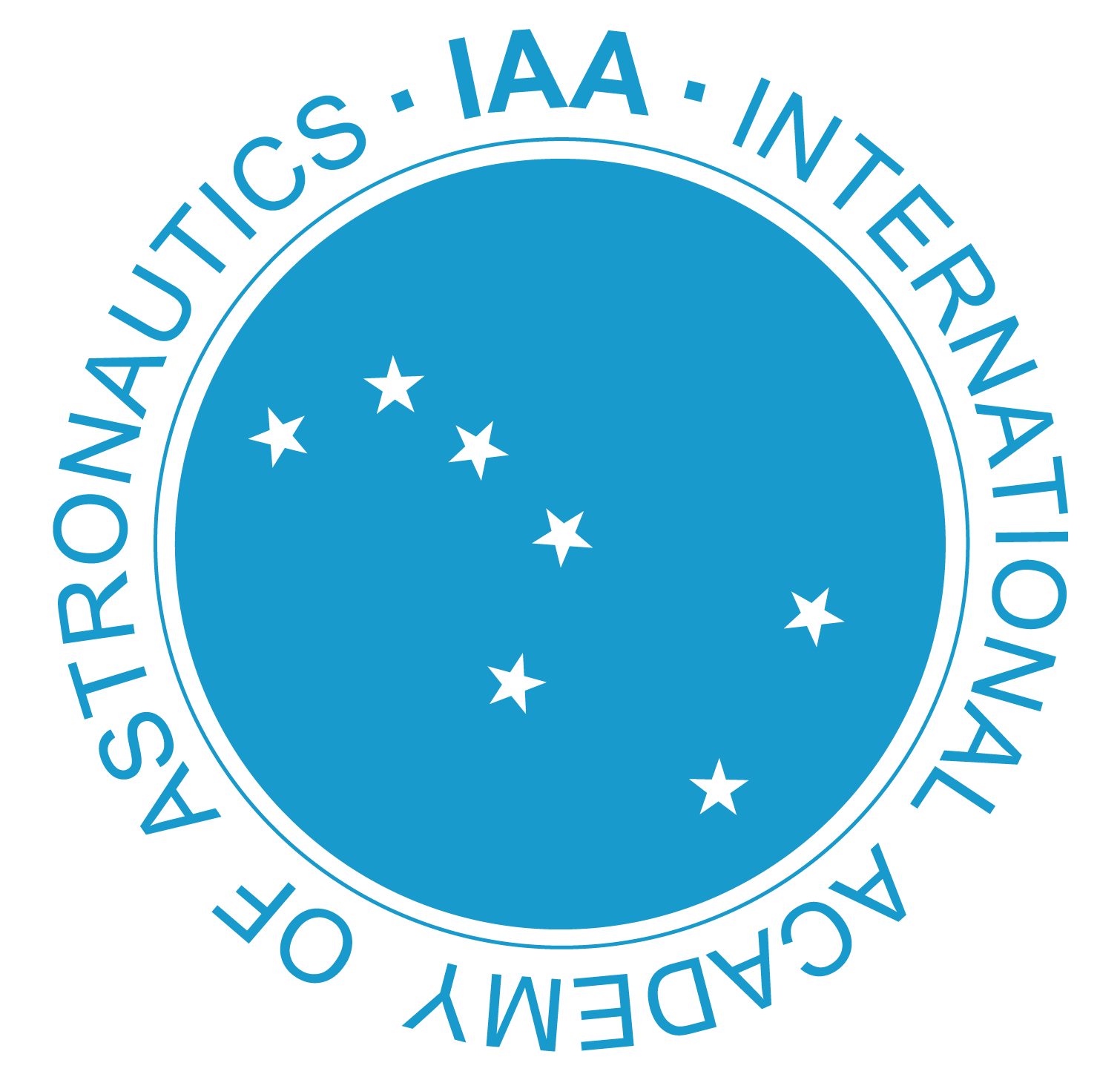 |
 |
|
| SPONSORS | |
 |
|
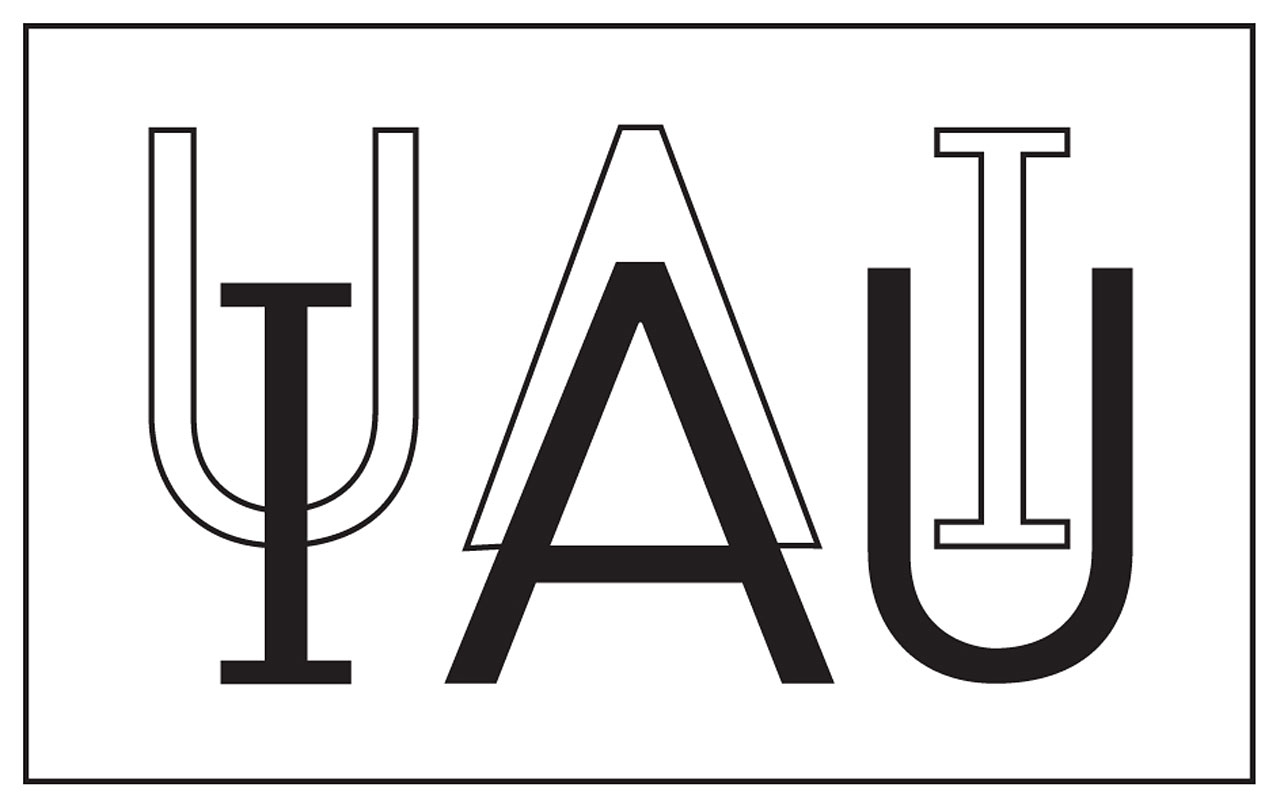 |
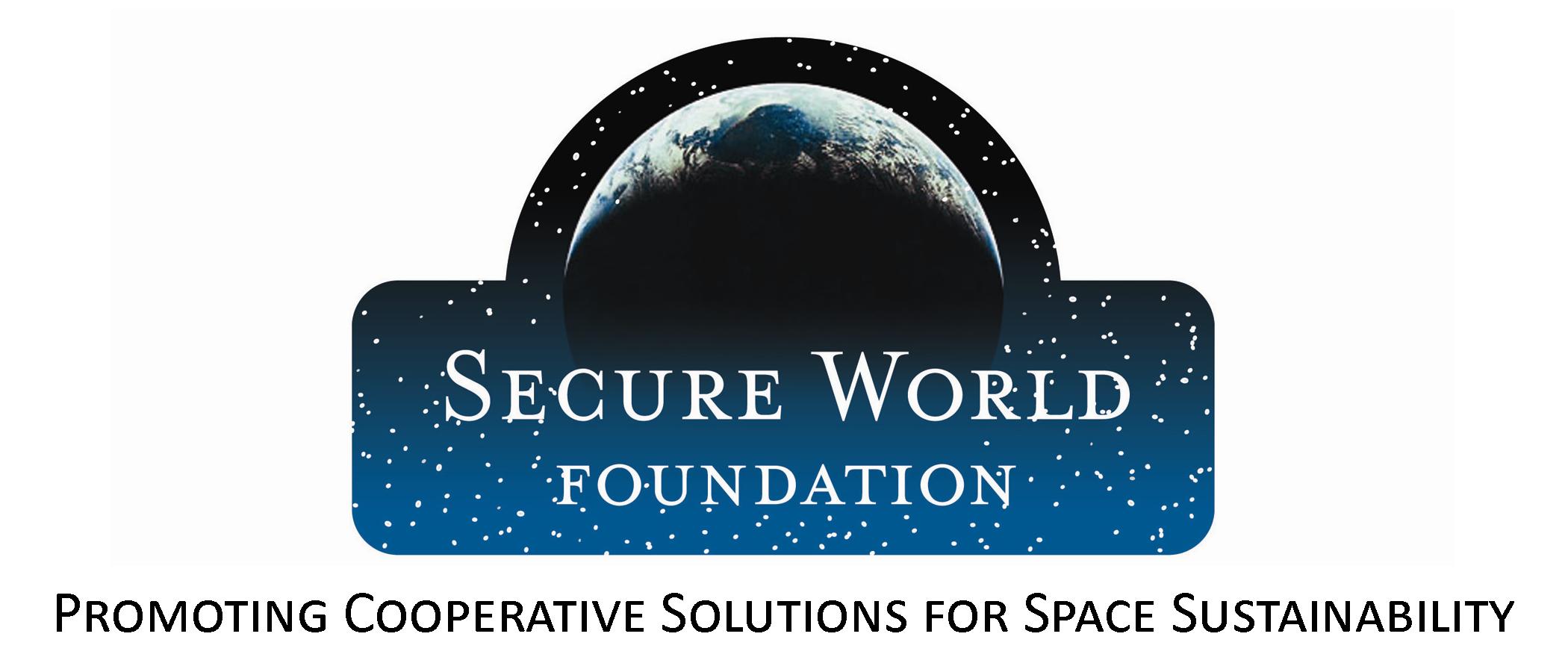 |
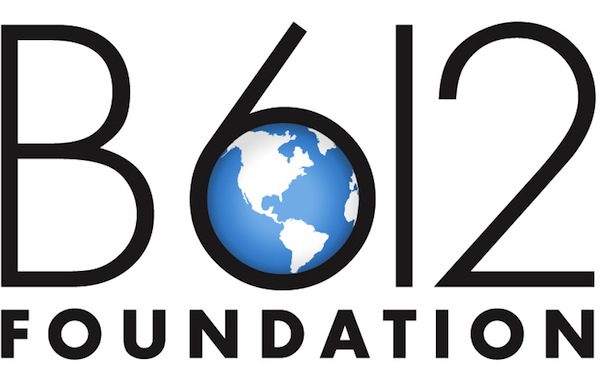 |
 |
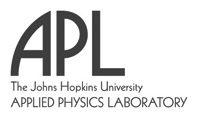 |
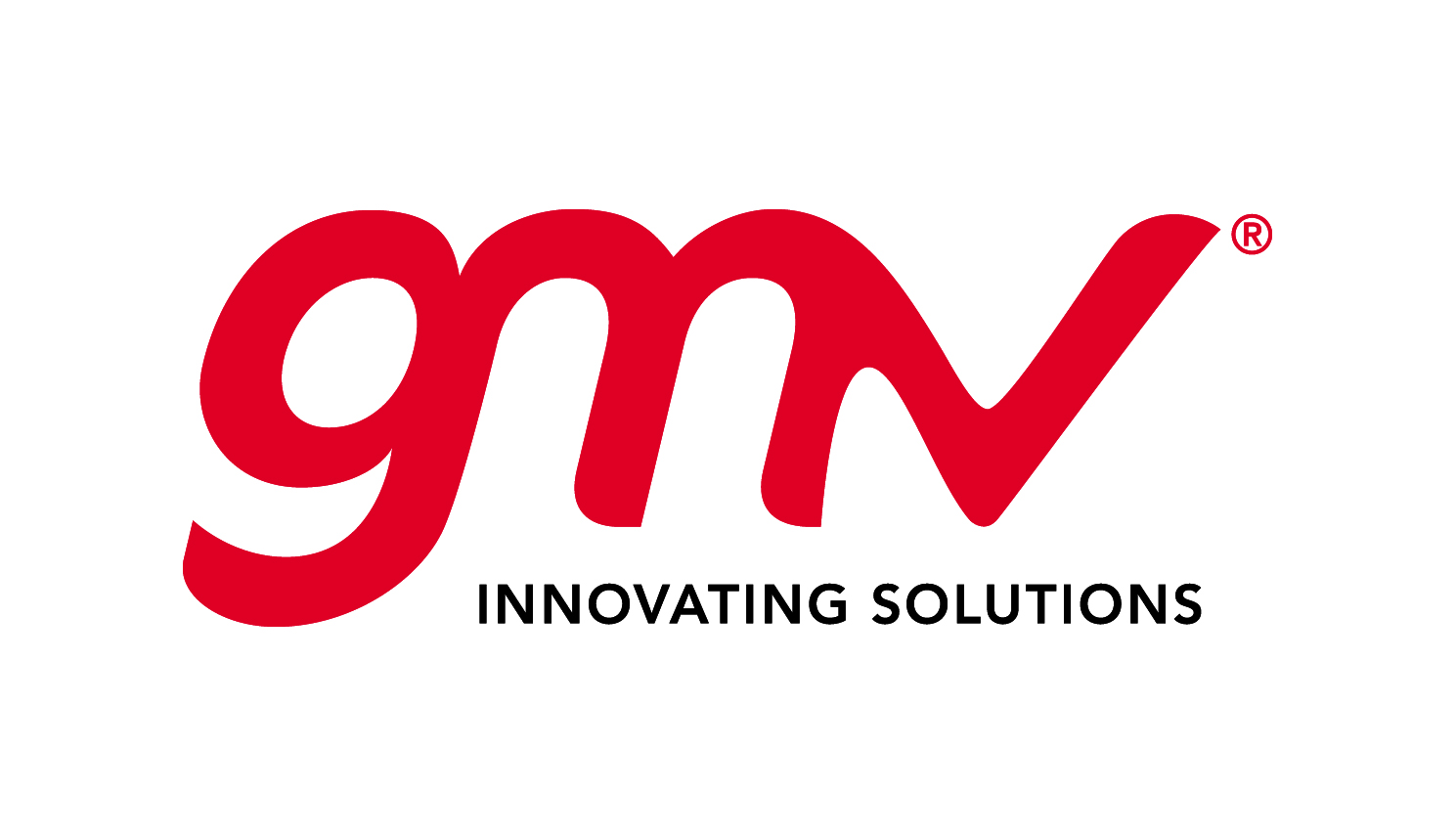 |
 |
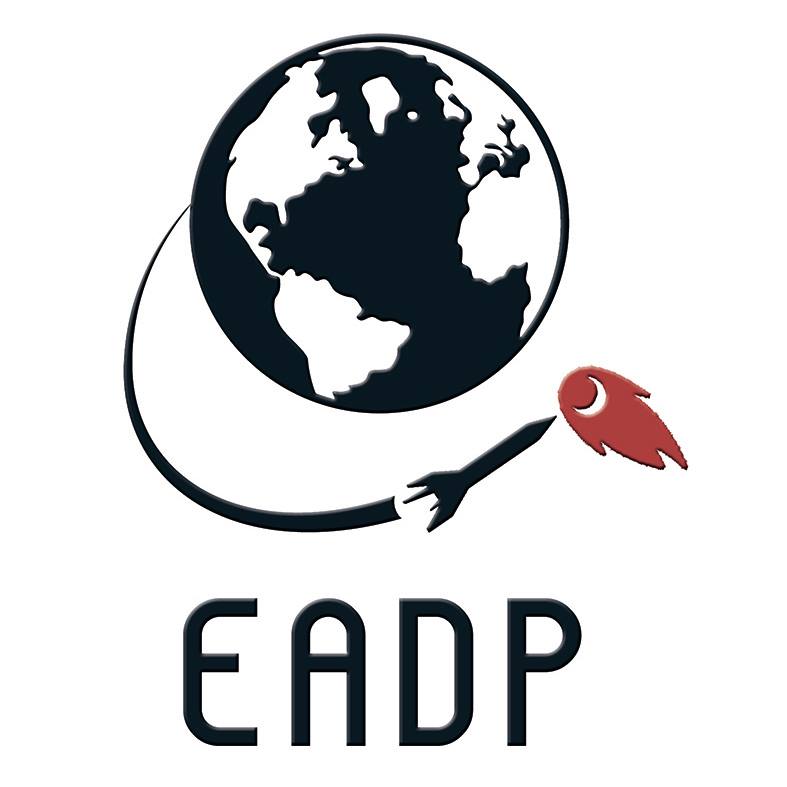 |
| PARTNERS | |
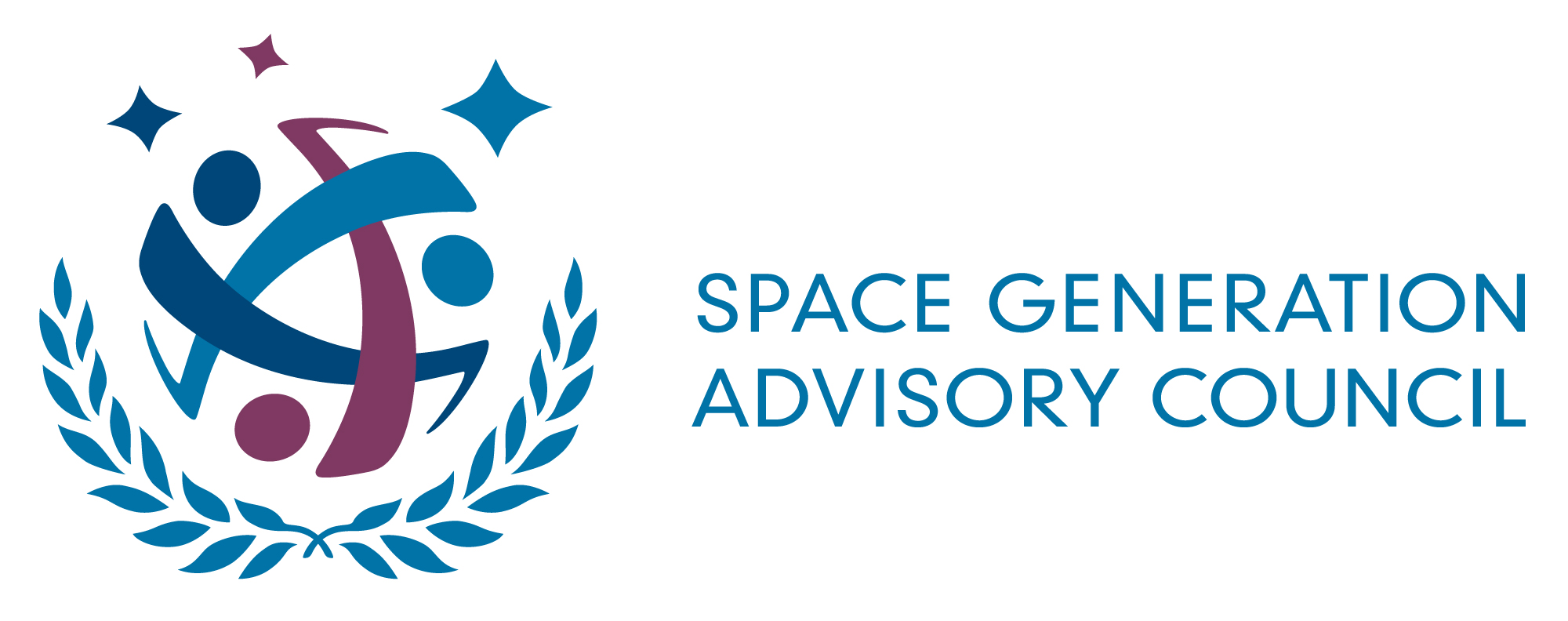 |
|
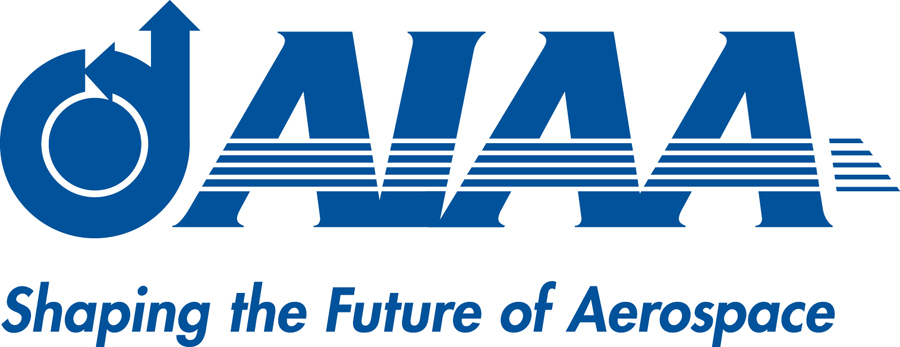 |
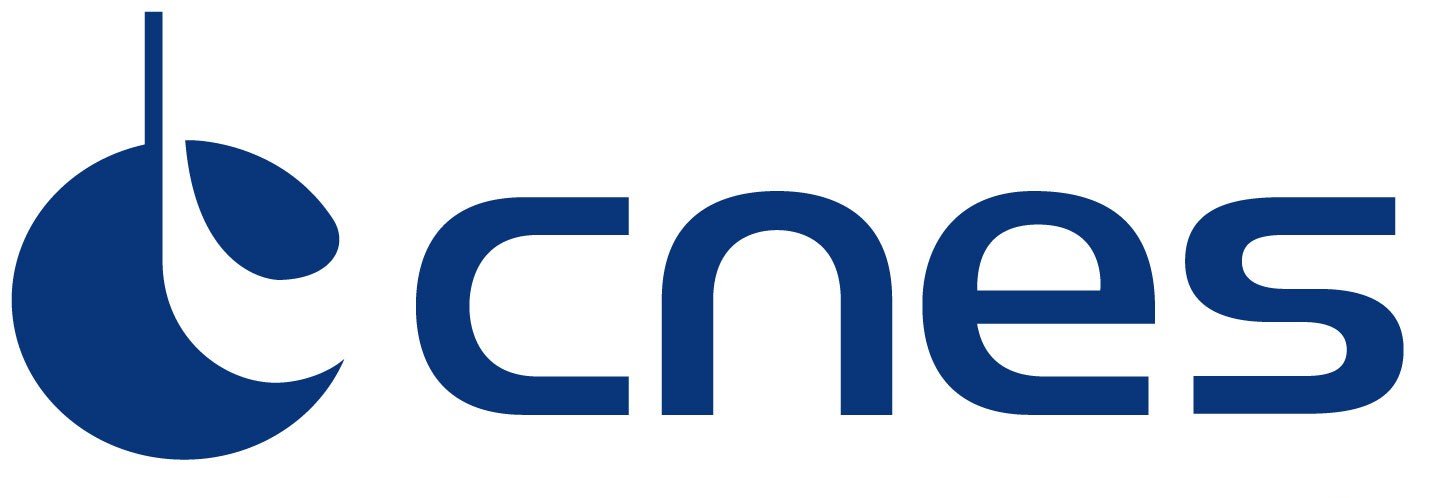 |
 |
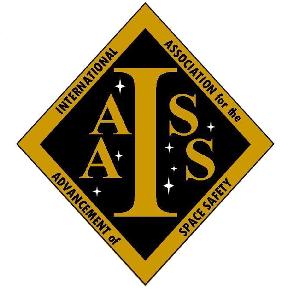 |
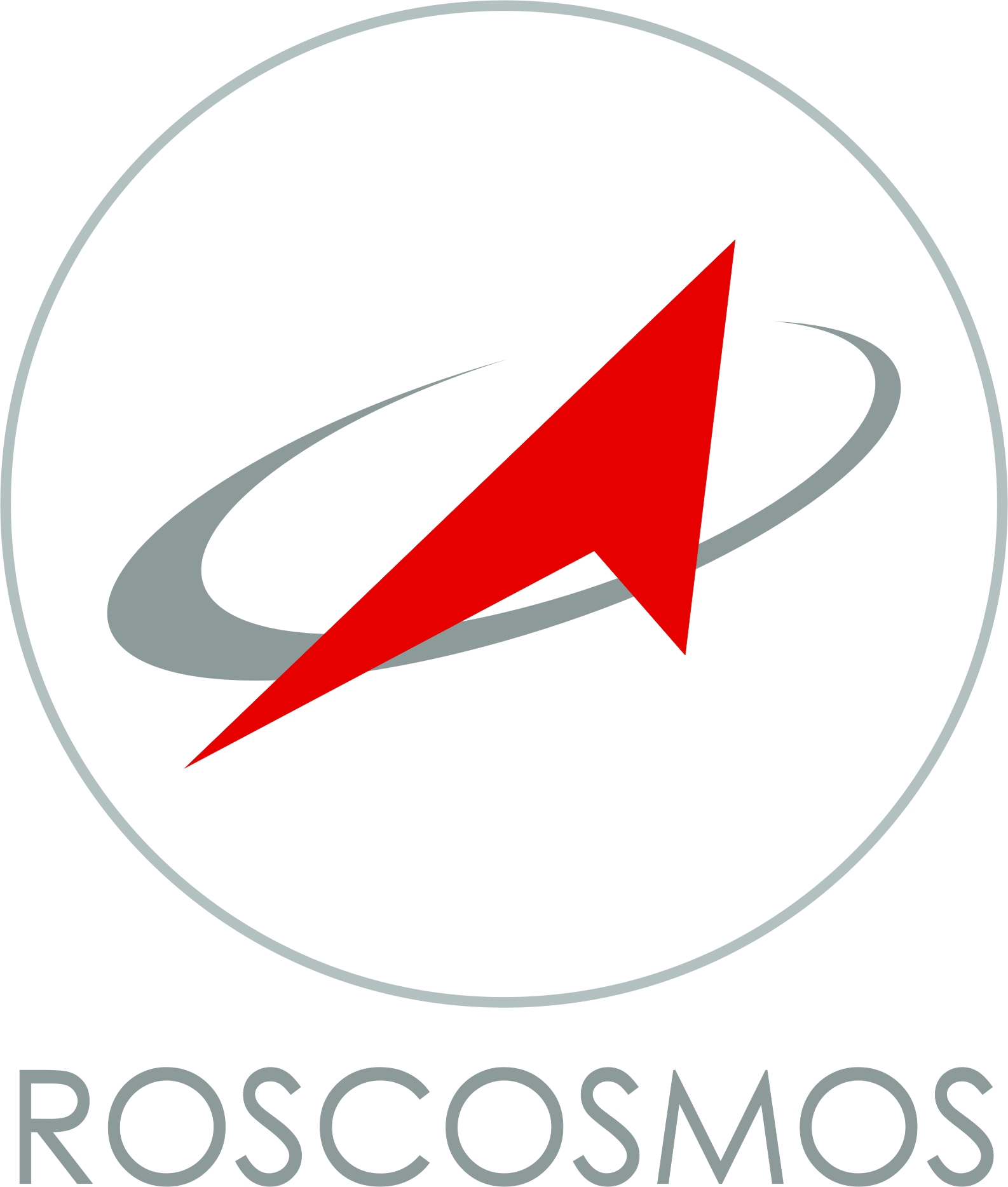 |
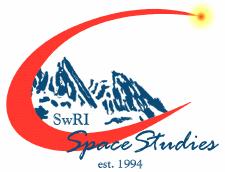 |
2015 IAA Planetary Defense Conference:
Assessing Impact Risk; Managing Response
13-17 April 2015
Frascati, Italy
Sponsorship Information
Sponsors are solicited for the 2015 conference at the $2000, $5000, $10000, and $15000 levels.
$15000 Sponsors will be listed as primary sponsors of the conference and names and logos will be prominently displayed on all conference materials.
$15000 Sponsors will receive seven complimentary registrations and a reduced, block-rate registration fee for up to 15 employees.
$10000 Sponsors will be listed as primary sponsors of the conference and names and logos will be prominently displayed on all conference materials.
$10000 Sponsors will receive five complimentary registrations and a reduced, block-rate registration fee for up to ten employees.
$5000 Sponsors will be listed as sponsors and names and logos will be prominently displayed on all conference materials. $5000 Sponsors will receive two complimentary registrations and a reduced, block-rate registration fee for up to five employees.
$2000 Sponsors will be listed as sponsors and names and logos will be prominently displayed on all conference materials. $2000 Sponsors will receive one complimentary registration and a reduced, block-rate registration fee for up to two employees.
For more sponsorship information and for information on sponsoring a reception or other special event at the conference, please contact the conference co-chairs
at:
William Ailor: william.h.ailor (at) aero.org
Richard Tremayne-Smith: richard.tremayne-smith (at) ntlworld.com
Sponsorship information in pdf format

5th IAA Planetary Defense Conference
Gathering for Impact!
| Conference report is now available.
Live streaming was available. Videos of the conference are available. How to participate in the Emergency response exercise Past Planetary Defense Conferences are available on this website (with conference report, papers, presentations and detailed information).
National Museum of Emerging Science and Innovation (Miraikan, Tokyo, Japan)
If you want to receive conference update, please join our Email list at Contact us |
The International Academy of Astronautics will hold its 5th conference from 15 to 19 May 2017 in Tokyo, Japan. The bi-annual conference brings together world experts to discuss the threat to Earth posed by asteroids and comets and actions that might be taken to deflect a threatening object.
The conference will include a hypothetical NEO/Earth impact event scenario that will be part of the conference (similar to what was done at the 2013 & 2015 conferences). Conference attendees may also use the hypothetical scenario as their topic for papers and presentations.
|
Official Media Sponsor
| Early-Bird Registration |
|---|
| 24 Sep 2016 to 14 Mar 2017 |
| Abstract Submission Date |
|---|
| 24 Sep 2016 to 13 Jan 2017 |
| Paper Submission Date |
|---|
| 3 Feb 2017 to 6 May 2017 |
Program in pdf print version is available.
2017 IAA PLANETARY DEFENSE CONFERENCE
ORGANIZING COMMITTEE
| Co-Chairs | ||
| Ailor | William | The Aerospace Corporation |
| Barbee | Brent | NASA Goddard Space Flight Center |
| Drolshagen | Gerhard | European Space Agency |
| Members | ||
| Anilkumar | AK | Indian Space Research Organization |
| Ashok | V | Indian Space Research Organization |
| Bernardi | Fabrizio | SpaceDyS |
| Betts | Bruce | The Planetary Society |
| Boslough | Mark B | Sandia National Laboratories |
| Cano | Juan | Deimos Space |
| Carnelli | Ian | European Space Agency |
| Chapman | Clark | Southwest Research Institute |
| Chodas | Paul | JPL |
| Contant | Jean-Michel | International Academy of Astronautics |
| Crowther | Richard | United Kingdom Space Agency |
| Dennemont | Fabrice | International Academy of Astronautics |
| Drube | Line | German Space Agency (DLR) |
| Duggan | Conor | Space Generation Advisory Council |
| Fitzsimmons | Alan | Queen’s University, Belfast |
| Friedensen | Victoria | NASA Headquarters |
| Graziano | Mariella | GMV Aerospace |
| Gutiérrez | Pedro | Instituto de Astrofísica de Andalucía – CSIC |
| Harris | Alan | German Space Agency (DLR) |
| Harris | Alan | Space Science Institute |
| Izzo | Dario | European Space Agency |
| Jennings | Barbara | Sandia National Laboratories |
| Johnson | Lindley | NASA Planetary Defense Officer |
| Jones | Tom | Association of Space Explorers |
| Karl | Alex | Space Generation Advisory Council |
| Koschny | Detlef | European Space Agency |
| Landis | Rob | NASA |
| Lewis | Debbie | Creative Resilience Ltd. |
| Lewis | Leviticus | Federal Emergency Management Agency |
| Melamed | Nahum | The Aerospace Corporation |
| Michel | Patrick | Côte d’Azur Observatory |
| Miller | Paul | Lawrence Livermore National Laboratory |
| Morrison | David | NASA Lunar Science Institute |
| Osburg | Jan | RAND Corporation |
| Simpson | Michael P | Secure World Foundation |
| Tantardini | Marco | Italian Space Agency (ASI) |
| Valsecchi | Giovanni | IAPS, INAF |
| van der Hucht | Karel A. | International Astronomical Union |
| von der Dunk | Frans | University of Nebraska-Lincoln |
| Wie | Bong | Iowa State University |
| Yoshikawa | Makoto | JAXA |
LOCAL ORGANIZING COMMITTEE
Chair
Makoto Yoshikawa JAXA
Vice-Chair
Junichi Watanabe NAOJ
Members
Toshinori Ikenaga JAXA
Hitoshi Ikeda JAXA
Hiroshi Oda JAXA
Hirohisa Kurosaki
Yohei Sugimoto
Yuichi Tsuda JAXA
Toshifumi Yanagisawa JAXA
Tomohiro Yamaguchi JAXA
Fumi Yoshida NAOJ
Atsuo Asami JSGA
Seitaro Urakawa JSGA
Shin-ichiro Okumura JSGA
Tokuhiro Nimura JSGA
Kota Nishiyama JSGA
Tomoko Fujiwara JSGA
Akira Imoto TPSJ
Koichi Rikitake TPSJ
Susumu Yoshitomi JSF
Takashi Ito NAOJ
LOC website is available at: http://planetary.jp/PDC/index_en.html
Exercise
The conference will include a hypothetical NEO/Earth impact event scenario that will be part of the conference (similar to what was done at the 2013 & 2015 conferences).
The conference features several working groups to address different aspects of a Hypothetical Asteroid Impact Scenario. Although this scenario is realistic in many ways, it is completely fictional and does NOT describe an actual potential asteroid impact.
How to participate in the Emergency response exercise
Leaflet PDC 2017 in pdf format version is available.
Call for Papers
Papers are solicited in the areas listed below for the 2017 IAA Planetary Defense Conference (PDC), sponsored by the International Academy of Astronautics (IAA). The 2017 PDC will include a hypothetical NEO/Earth impact event scenario that will be part of the conference (similar to what was done at the 2013 & 2015 conferences). Conference attendees may also use the hypothetical scenario as their topic for papers and presentations. (Additional details about the hypothetical scenario are provided below *).
An overall theme of the conference is to identify the most important areas that need development for an international program of planetary defense. Topic areas for papers include:
Key International and Political Developments
• Focus on the latest non-technical developments that are moving planetary defense forward
Advancements in NEO Discovery
• Highlight the latest developments related to discovery of possibly threatening asteroids and comets
• Describe current progress and define requirements for future surveys and for astronomical techniques for characterization of NEOs
• Current NEO survey progress and future prospects
New NEO Characterization Results
• Latest findings related to characterizing NEO physical, dynamical, and orbital properties
• Emphasis on characterization of properties most crucial to mitigation mission success
• Identify technologies to characterize NEOs via remote sensing and spacecraft flyby/landing
• Recent work on planned or active flight missions to NEOs (e.g., OSIRIS-REx, Hayabusa 2, etc.)
Deflection & Disruption Modeling and Testing
• Recent results in modeling/experimentation that characterizes the effects of proposed NEO deflection and disruption techniques and technologies
• Discuss recent progress and Identify key technologies that need to be developed for active defense (mitigation) of an identified NEA impactor
Mission & Campaign Design
• New work in the design of in-space mission campaigns to respond to hazardous NEOs (reconnaissance, characterization, mitigation)
• Development of NEO response mission campaigns, including an international approach
• Design of planetary defense flight validation missions (e.g., AIDA, etc.)
Impact Consequences
• New results on effects of ocean and land NEO impacts, including tsunamis generated by impacts; characterization of the damage footprint for NEO impacts
• Interactions between incoming NEOs and the atmosphere; understanding the process of atmospheric break-up and airbursts for a variety of NEO types; could include summaries of the Chelyabinsk superbolide and its lessons
• Possible effects on near-Earth space and space systems (e.g., communications) due to NEO debris in space
• Consideration of the hazards of an individual impactor; consideration of the ensemble hazard integrated over the predicted population of impactors
Disaster Response
• Lessons learned from public education, alerts, and warnings of natural disasters that would inform developments of similar notices for a pending NEO impact disaster
The Decision to Act
• Current outlook on the NEO response decision-making process at various levels (e.g., global, national, etc.)
• Identify areas of greatest risk and suggest analysis tools that could aid decision makers
• Discuss the value of international collaboration and suggest ways to distribute the responsibility for defense against incoming NEAs.
Public Education and Communication
• Current status of planetary defense / NEO-related public education and communication efforts
• Concepts for improving NEO / planetary defense public education and communication
• Connections to disaster response, e.g., effective formatting and dissemination of alerts, etc.
ABSTRACT SUBMITTAL: Technical paper abstracts (250 to 500 words in length) in the areas described above or related to planetary defense will be accepted electronically by email to iaapdc(at)iaamail.org beginning October 1st, 2016. Please be sure to designate the topic area your paper addresses (see topics listed above). The deadline for receipt of abstracts is January 13, 2017. Letters of official acceptance will be mailed on or before February 09, 2017.
PAPERS: Full paper manuscripts or two-page extended abstracts are encouraged. Revisions and corrections will be accepted within two weeks after the end of the conference. The format for papers is specified on the conference web site. Accepted papers (including two-page extended abstracts and poster papers) will be published on the official conference proceedings memory stick and hosted at the conference website. A selection of best papers will also be published.
STUDENT COMPETITION: One or more of the best student paper(s) will be awarded a prize. The aim of the student competition is to help promote academic work and informed political debate by enhancing research and general understanding essential for sound decision making on NEO impact threats in years to come.
* The conference will include an exercise where participants will simulate the decision-making process for developing deflection and civil defense responses to a threat posed by hypothetical asteroid designated “2017 PDC.” Information on the threat will be posted at http://neo.jpl.nasa.gov/pdc17/ on June 1st, 2016 (11 months before the conference) and updates typical of what would be known if the threat were real will be provided in the months leading up to the conference. Attendees are invited to use the hypothetical asteroid “2017 PDC” as a subject for their own exercises and for papers to be presented at the conference. During the conference, updates on the threat will be provided daily, and participants will develop a set of actionable recommendations based on that information.
CONTACT:
International Academy of Astronautics
6 rue Galilée, BP 1268-16, 75766 Paris Cedex 16
Tel 331 47 23 82 15, Fax 331 47 23 82 16
iaapdc (at) iaamail.org
Paper Submission
Authors with an accepted abstract may send their paper to iaapdc(at)iaamail.org
PAPERS: Full paper manuscripts or two-page extended abstracts are encouraged. Papers, Posters and presentations received by May 6, 2017 deadline will be included in the conference memory stick. Revisions and corrections will be accepted within two weeks after the end of the conference. The format for papers is specified in the paper template available below. Accepted papers (including two-page extended abstracts, presentations and poster papers) will be published on the official conference proceedings memory stick and hosted at the conference website.
ACTA ASTRONAUTICA JOURNAL: please note that a special issue of Acta Astronautica, the journal of the International Academy of Astronautics, will be published with a selection of papers presented during the Planetary Defense Conference in Tokyo.
Paper template
(Word format document)
LaTeX templates are also available:
LaTeX Extended Abstract template
LaTeX Paper template
POSTERS:
Poster maximum size is:
Height: 210 cm, Width: 90 cm
Portrait orientation
(no onsite printing service, please bring your printed poster to the Conference. Poster size is a maximum size limit. You may bring a smaller poster).
Abstract submission is now closed.
ABSTRACT SUBMITTAL: Technical paper abstracts (250 to 500 words in length) in the areas described above or related to planetary defense will be accepted electronically by email to iaapdc(at)iaamail.org beginning September 24, 2016. Please be sure to designate the topic area your paper addresses (see topics listed in the abstract template). The deadline for receipt of abstracts is January 13th, 2017. Letters of official acceptance will be mailed on or before February 09, 2017.
LaTeX Abstract template
Tokyo one day bus tour:
This tour visits popular sightseeing spots in Tokyo on Sunday 14 May 2017 or on Saturday 20 May 2017.
Tour Program is now available.
Payment onsite.
To register please send the tour form to iaapdc(at)iaamail.org
Tokyo enjoys a long history of prosperity as Japan’s capital since 1603, when Tokugawa Ieyasu established his shogunate and named the city Edo. Today, with a population of about 13 million, it has grown into the largest of the 47 prefectures of Japan and indeed one of the greatest metropolises in the world. Comprising 23 special wards, 26 cities, 5 towns, and 8 villages, Tokyo is the center of various activities in Japan including politics, economy, and culture.
Located geographically at roughly the center of the Japanese archipelago and in the southern part of the Kanto region, Tokyo shares borders with Chiba Prefecture to the east, separated by the Edogawa River; Yamanashi to the west, by a mountain range; Kanagawa to the south, by the Tamagawa River; and Saitama to the north. With a total area of 2,187 square kilometers, it is the third smallest administrative division in the country. And yet as compact as it is, the land unfolding from east to west is rich in topographical features, from lowlands of only 4 meters above sea level to scatterings of mountains, hills, and plateaus reaching 2,000 meters high, and extends even to the volcanic Izu Islands and the Ogasawara Islands in the Pacific Ocean.
Tokyo offers a seemingly unlimited choice of shopping, entertainment, culture and dining to its visitors. The city’s history can be appreciated in districts such as Asakusa, and in many excellent museums, historic temples and gardens. Contrary to common perception, Tokyo also offers a number of attractive green spaces in the city center and within relatively short train rides at its outskirts.
Venue
The venue : Miraikan (National Museum of Emerging Science and Innovation)
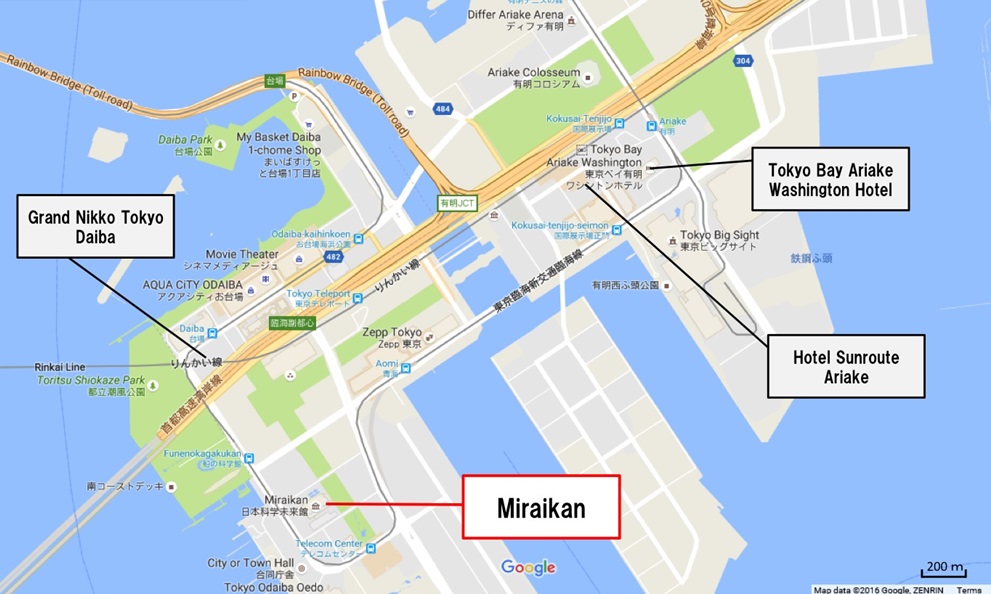
The nearest station from Miraikan is Fune-no-kagakukan of Yurikamome-line. It takes about 5 minutes by walk from this station to Miraikan.
The terminal of Yurikamome-line is Shinbashi-station (JR-line). It takes about 16 minutes by train from Shinagawa to Fune-no-kagakukan (8 stations). Therefore, the convenient place to go to Miraikan is Shinbashi.
Shinbashi-station is on the Yamanote-line, and for example, it takes just 3 min by train from Tokyo station to Shinbashi.
Therefore, it takes about 30 min from Tokyo-station (=the central part of Tokyo) to Miraikan.
Official Media Sponsor
Sponsorship Information is also available in pdf format
| PRIMARY SPONSORS | |
 |
 |
 |
 |
 |
 |
| SPONSORS | |
 |
 |
 |
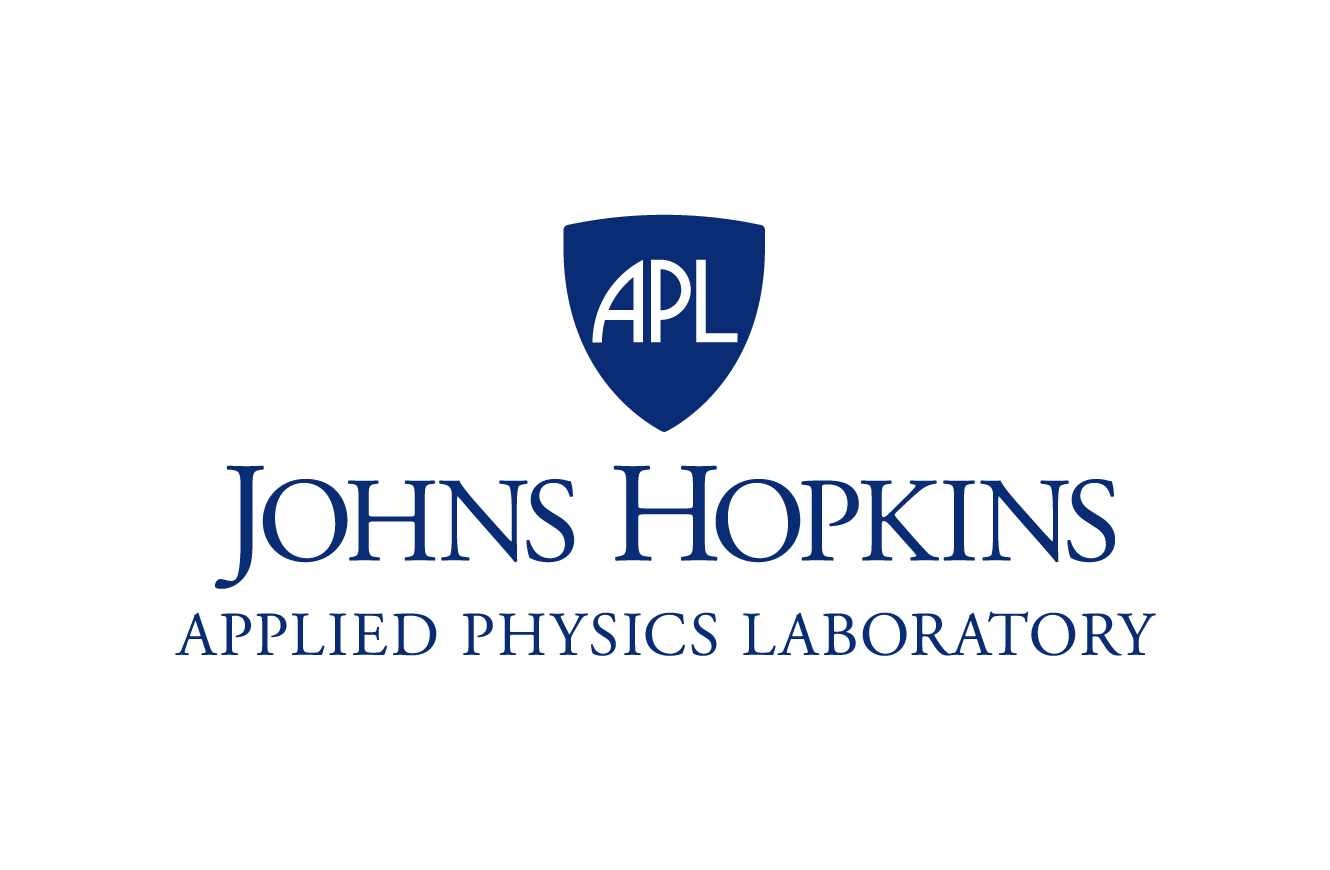 |
 |
 |
 |
|
| SUPPORTERS | |
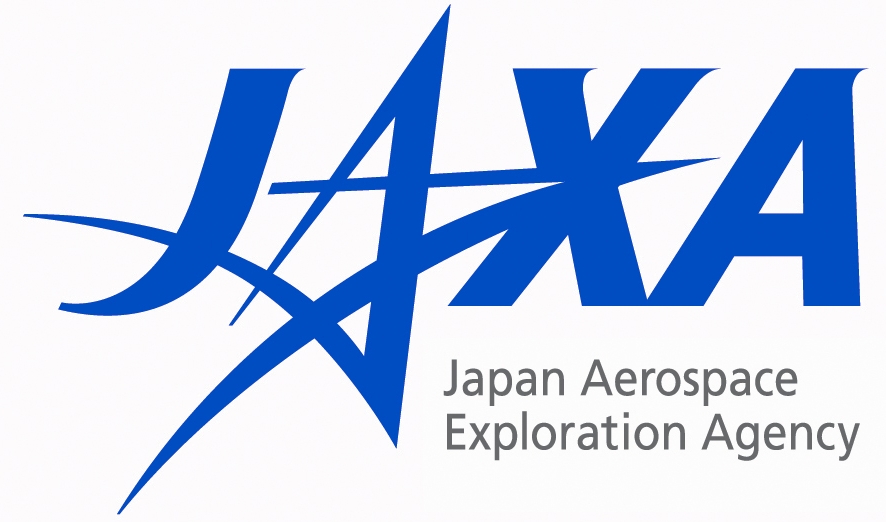 |
 |
 |
 |
 |
 |
International Academy of Astronautics2019 IAA Planetary Defense Conference April 29 – May 03, 2019
|
International Academy of Astronautics2021 IAA Planetary Defense Conference 7th IAA Planetary Defense Conference
Conference report is available here: Conference report Final Program and Conference data are available here: Final Program On-line WebEx Conference Hosted by the United Nations Office for Outer Space Affairs, in cooperation with the European Space Agency Registration In consideration of the prevailing circumstances, the PDC organizers have decided that the 2021 PDC will be conducted virtually.  Final Program is available:
The International Academy of Astronautics will hold its 7th conference on April 26-30, 2021. The bi-annual conference brings together world experts to discuss the threat to Earth posed by asteroids and comets and actions that might be taken to deflect a threatening object.
Working language The working language of the Conference will be English. All participants are required to have good English language skills. Registration to the conference is now closed as the maximum number of participants has been reached. The conference will include a hypothetical NEO/Earth impact event scenario that will be part of the conference (similar to what was done at the 2013, 2015, 2017 & 2019 conferences). Conference attendees may also use the hypothetical scenario as their topic for papers and presentations. Although this scenario is realistic in many ways, it is completely fictional and does NOT describe an actual potential asteroid impact.
PDC 2021 Call for Papers (pdf version leaflet) Public Event – 29 April 2021 Earthlings vs. Asteroids: What’s the Score? Join us for a special virtual event that takes a look at the state of humanity’s planetary defense efforts. How much do we know about the asteroids that are out there? And how prepared are we to prevent an impact? We’re bringing together some of the world’s foremost experts on planetary defense to find out. Watch this free live event at: planetary.org/live with captioned translations in several languages. Also available on The Planetary Society’s Facebook and YouTube pages. Featuring: Program Committee2021 IAA PLANETARY DEFENSE CONFERENCE Co-Chairs:
Members:
Local Organizing Committee
ExerciseThe 2021 PDC Hypothetical Asteroid Impact Scenario A hypothetical asteroid impact scenario will be presented at the 2021 IAA Planetary Defense Conference (PDC). Although this scenario is realistic in many ways, it is completely fictional and does NOT describe an actual potential asteroid impact. Please see the link below: https://cneos.jpl.nasa.gov/pd/cs/pdc21/ Contacts for MediaPlease click here below for the list of contacts for Media
pdf version of the list of contacts for media. LeafletLeaflet is now available: pdf version leaflet. Call for Papers Papers are solicited in the areas listed below for the 2021 IAA Planetary Defense Conference (PDC), hosted by the United Nations Office for Outer Space Affairs, under the auspices of the International Academy of Astronautics (IAA). The 2021 PDC will include a hypothetical impact event to be both a part of the conference (similar to what was done at the 2013, 2015, 2017 and 2019 conferences), and, where appropriate, to be used as a reference for papers and presentations (more details below[1]). A student paper/poster competition will be held, and papers/posters eligible for the student competition should be indicated as such during submission. Limited student financial support may be available; students may inquire with the conference co-chairs: Bill Ailor, Brent Barbee, Gerhard Drolshagen, Alex Karl and Nahum Melamed. A broad theme of the conference is to identify the technologies, techniques, missions, data sets, and processes that most need development for an international program of planetary defense. Topic areas for papers include: Highlight/Spotlight topic areas
Key International and Policy Developments
Advancements in Near Earth Object (NEO) Discovery
New NEO Characterization Results
Deflection & Disruption Modeling and Testing
Mission & Campaign Design
Impact Management & Consequences
Disaster Management & Response
Public Education and Communication
The Decision to Act: Political, Legal, Social and Economic Aspects
ABSTRACT SUBMITTAL: Technical paper abstracts (250 to 500 words in length) in the areas described above or related to planetary defense will be accepted electronically through the conference local website (https://atpi.eventsair.com/7th-iaa-planetary-defense-conference-2021/abstractsubmission) beginning September 1, 2020. Please be sure to designate the topic area your paper addresses (see topics listed above). Please also indicate whether the abstract is eligible for the student competition (see below). The deadline for receipt of abstracts is January 31, 2021. Letters of official acceptance will be mailed on or before February 15, 2021. PAPERS: Full-length manuscripts or two-page extended abstracts are due by close of business on April 16, 2021. Revisions and corrections will be accepted within two weeks after the end of the conference. The format for papers is specified on the conference website. Accepted papers (including two-page extended abstracts and poster papers) will be published on the official conference proceedings and hosted at the IAA website. Full-length manuscripts may be considered for publication in a special edition of Acta Astronautica. STUDENT COMPETITION: One or more of the best student paper(s)/poster(s) will be awarded a prize. The aim of the student competition is to help promote academic work and informed political debate by enhancing research and general understanding essential for sound decision making on NEO impact threats in years to come. TEMPLATE FILES: Please download the PDC 2021 template files here: [1] Attendees are invited to use the threat scenario as a subject for their own exercises and for papers to be presented at the conference. Details on the threat will be posted at https://cneos.jpl.nasa.gov/. Instructions for Authors
Instructions for authors (pdf print version)
=====
|
|||||||||||||||||||||||||||||||||||||||||||||||||||||||||||||||||||||||||||||||||||||||||||||||||||||||||||||||||||||||||||
2004-2021 Conference data
Abstracts, extended abstracts, presentations, papers and posters are available for download.
Please use the link below:
https://web.tresorit.com/l/r9kWE#rL9uPkEM1-BgE6U9cy4QHw
